Secrets of the pharaohs: inside Egypt’s pyramids and tombs
Life and death in ancient Egypt
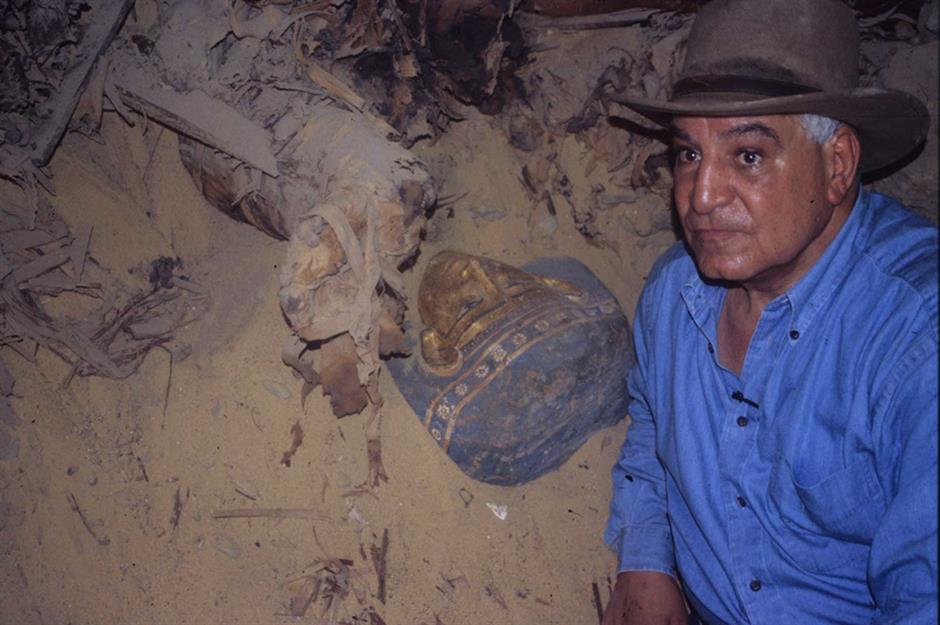
We all know what Egypt’s pyramids look like on the outside, but what do they look like on the inside? Narrow passageways, spacious chambers and steep galleries make up the bulk of the interior layouts. Relics from the pyramids are on display in museums around the world – and in Giza's shiny new Grand Egyptian Museum, slated to open fully in late 2025 – while the surrounding tombs contained untold wonders too.
Click through this gallery to discover the stories behind Egypt's greatest funerary monuments, and learn about the mysterious treasures recovered from its ancient tombs...
Khufu Pyramid, Giza
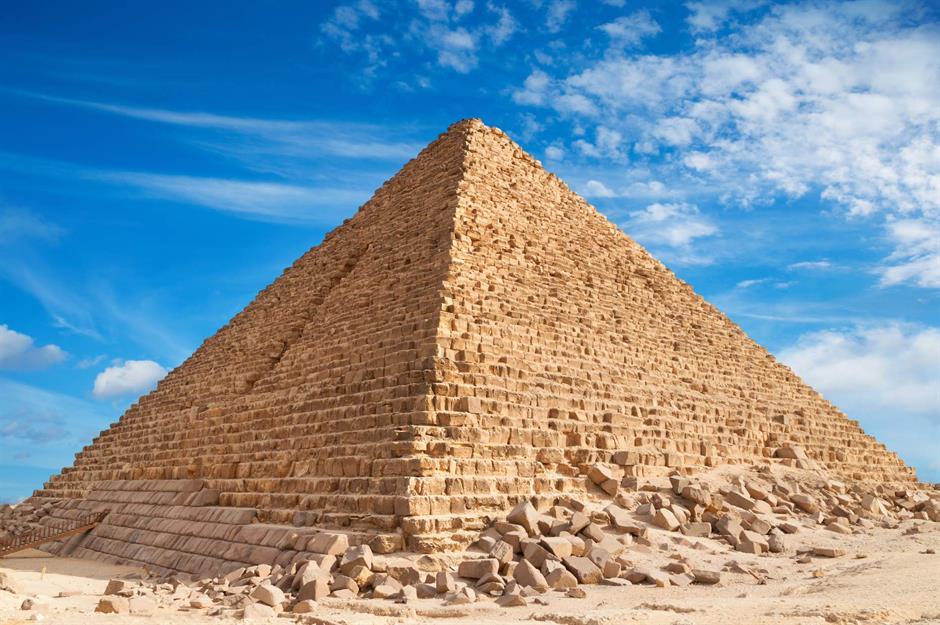
The Great Pyramids of Giza complex consists of three pyramids, each named after the king they contained: Khufu, Khafre and Menkaure. The Khufu Pyramid is the largest of the three, standing at a height of 482 feet (147m).
It was constructed between 2550 and 2490 BC, using a whopping 2.3 million stone blocks. Khufu ruled between 2589 and 2566 BC and was the second pharaoh of the 4th dynasty.
Khufu Pyramid, Giza
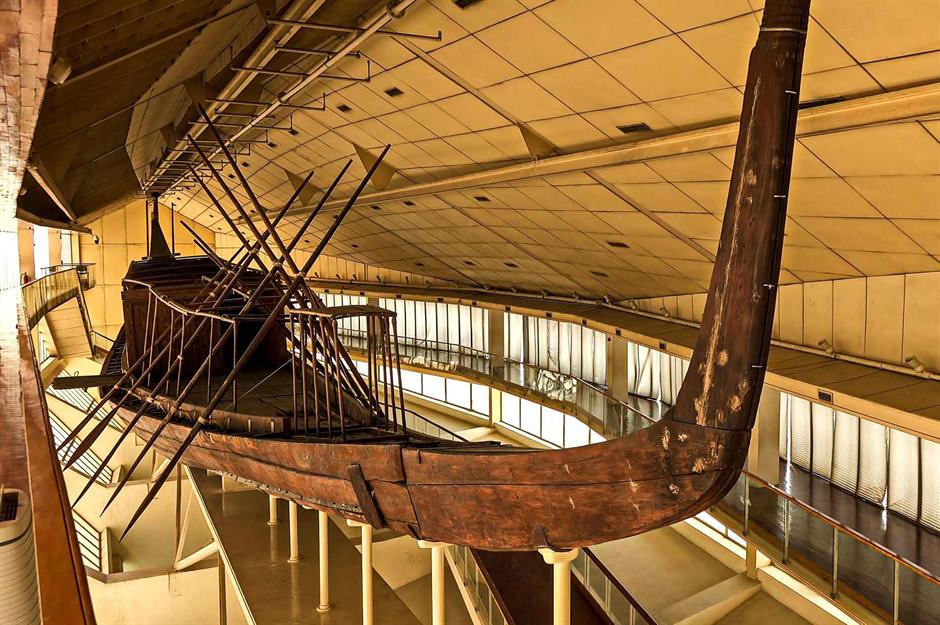
In 1954, a dismantled wooden ship was discovered buried next to the pyramid – a common inclusion as ancient Egyptians believed these vessels would transport their kings to the afterlife. As the pharaoh was believed to be the earthly representation of Ra, the sun god, they were called solar boats.
Until 2021, Khufu's ship was housed in its very own Giza Solar Boat Museum, not far from where it was first discovered, but it has now been moved to the Grand Egyptian Museum, where the public will be able to see it after the grand opening in November 2025.
Khufu Pyramid, Giza
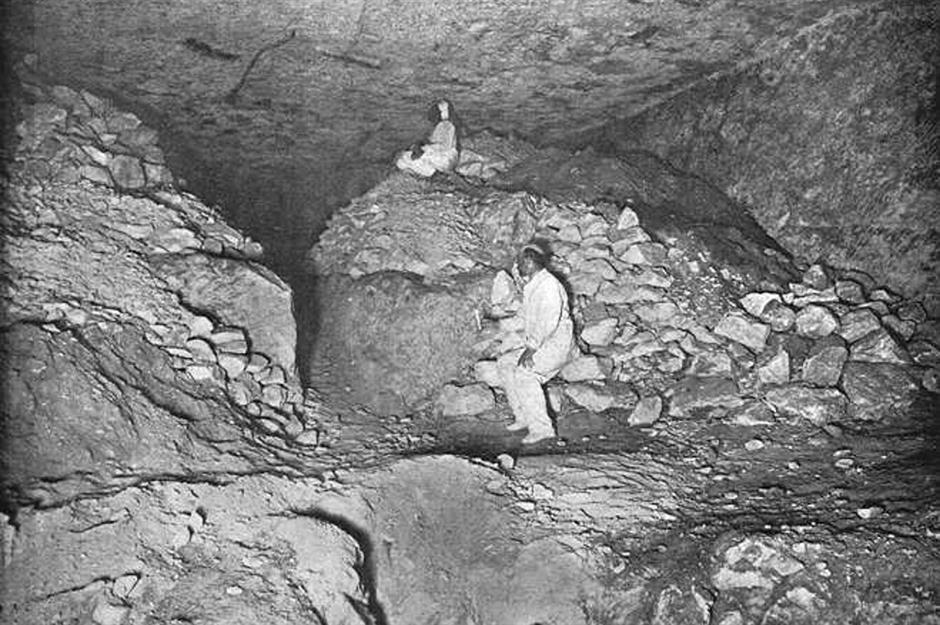
Another aspect of the Khufu Pyramid overlooked during early explorations was a network of subterranean passages, commonly referred to as 'the pit'. In the 18th century the rubble blocking the descending passageway was cleared, and a Greek or Roman character was discovered on one of the tunnel ceilings.
It might not look like the most striking discovery, but it seemingly confirmed accounts that the pyramid's interior was accessible during the ancient period.
Khufu Pyramid, Giza
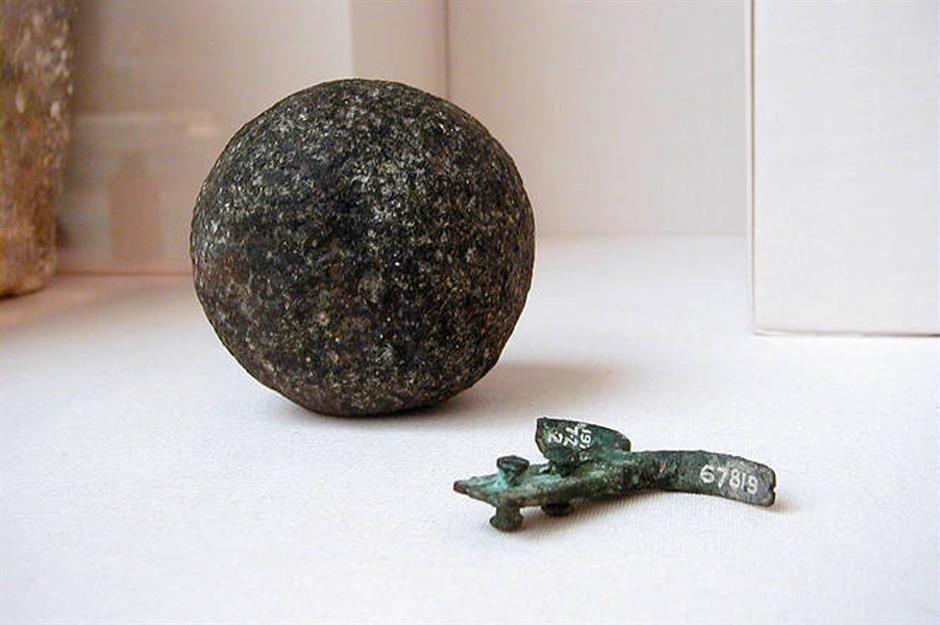
For such a grand pyramid very few artefacts were discovered; just three items, in fact. Commonly referred to as 'the Dixon Relics', named after Waynman Dixon who found them in 1872, the items consist of a granite sphere, a forked copper instrument and a wooden slat.
The forked instrument may once have included a bone or wooden handle and was likely used to manipulate rope, while the granite sphere worked as a pounder.
Khufu Pyramid, Giza
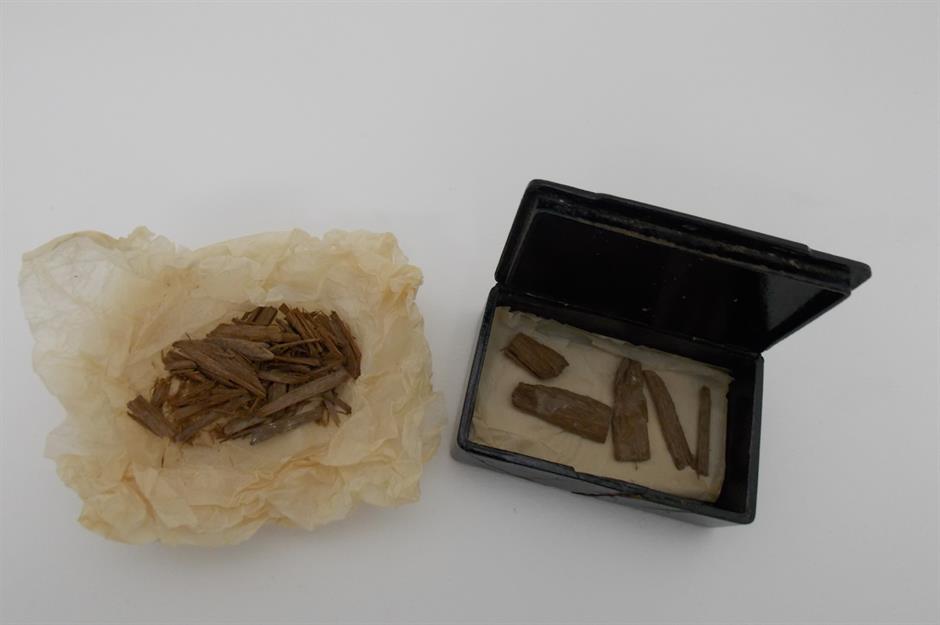
The wooden slat, meanwhile, went missing for more than a century, and was only rediscovered in 2020 when a curatorial assistant at the University of Aberdeen stumbled across the item hidden in a cigar tin.
Interestingly, the slat was carbon dated to 500 years before the supposed construction of the pyramid, posing new questions about when it was actually built.
Khufu Pyramid, Giza
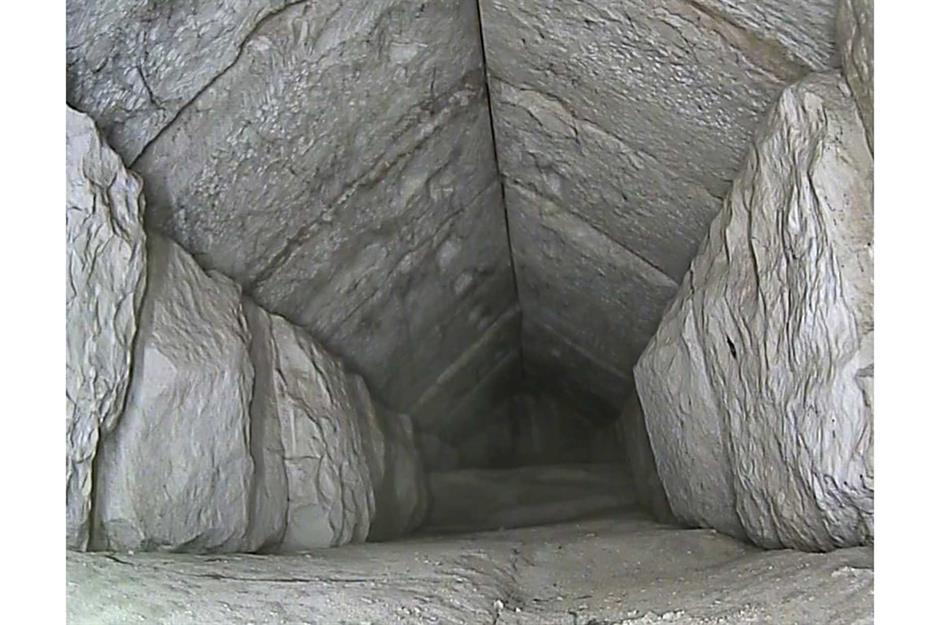
In March 2023, a 4,500-year-old chamber was discovered in the Khufu Pyramid. Located using high-tech equipment, the corridor – which measures 30 feet (9m) long and over six feet (1.8m) wide – is found close to the northern side of the ancient pyramid’s main entrance.
The room cannot be accessed from outside – this photo was taken by feeding a tiny camera through cracks in the masonry – and archaeologists are still trying to figure out its purpose.
Meidum Pyramid, Meidum

Located roughly 62 miles (99km) from Cairo, the Meidum Pyramid was built during the reign of King Sneferu, the first pharaoh of the 4th dynasty (2613 to 2589 BC). The Meidum Pyramid was Egypt’s first straight-sided pyramid – affectionately said by some to resemble a sandcastle – and it's often described as a ‘false pyramid’.
Numerous construction issues meant it was never completed, so its appearance is noticeably different to other Egyptian pyramids.
Meidum Pyramid, Meidum
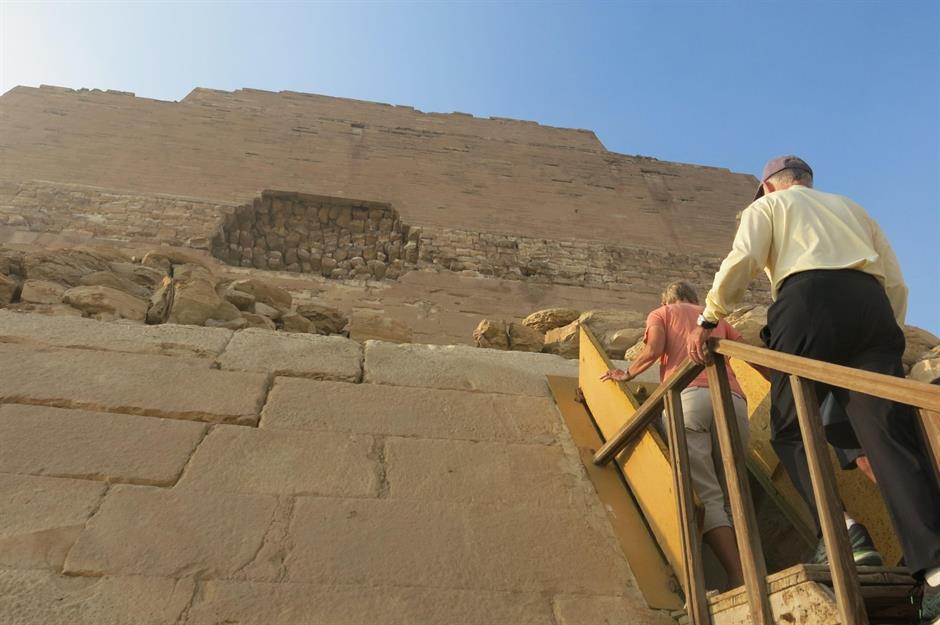
Entering the Meidum Pyramid takes visitors along a steep passageway, 56 feet (17m) in length, leading down to what would’ve been the burial chamber. Here, the sarcophagus (a large stone-built coffin usually displayed on ground level) would have held the mummified pharaoh.
Except there’s nothing there. The burial chamber was never completed, there are no human remains and there’s no valley temple (a place where the royal mummy was received), which was a standard inclusion in royal ancient Egyptian burials.
Meidum Pyramid, Meidum
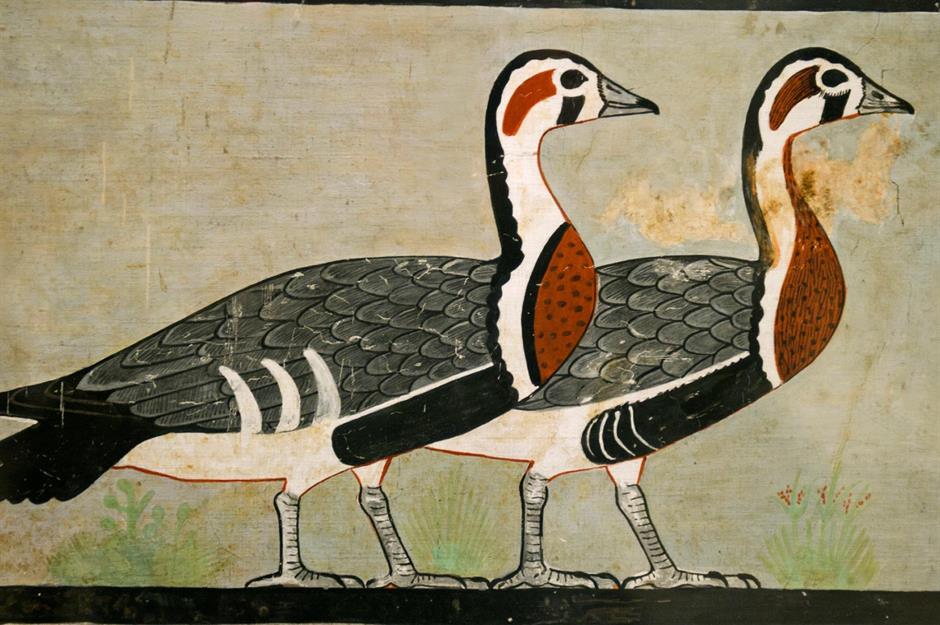
The Meidum Geese painting was discovered in a tomb beside the Meidum Pyramid, and is now on display at the Egyptian Museum in Cairo. The wall painting features six geese: two pairs facing away from each other at the centre, and one goose at each end picking at the grass.
Natural pigments include white from limestone, red from hematite and green from malachite, and would have been mixed with egg white emulsifier.
Meidum Pyramid, Meidum
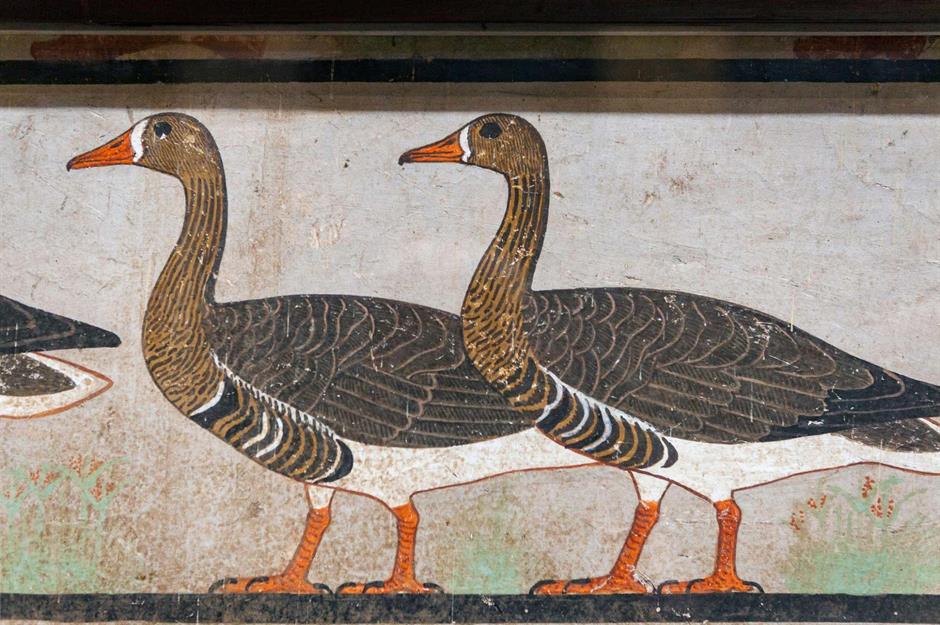
Although a faster paint-and-plaster approach was applied in this part of the painting, you can still admire the exceptional level of detail. It was discovered on the north wall in the tomb chapel of Itet, daughter-in-law of King Sneferu and wife to his son, Nefermaat. It would have been part of a larger scene in the tomb.
While the original wall painting is on display in Cairo, there’s also a replica on display at the Metropolitan Museum of Art in New York.
Bent Pyramid, Dahshur
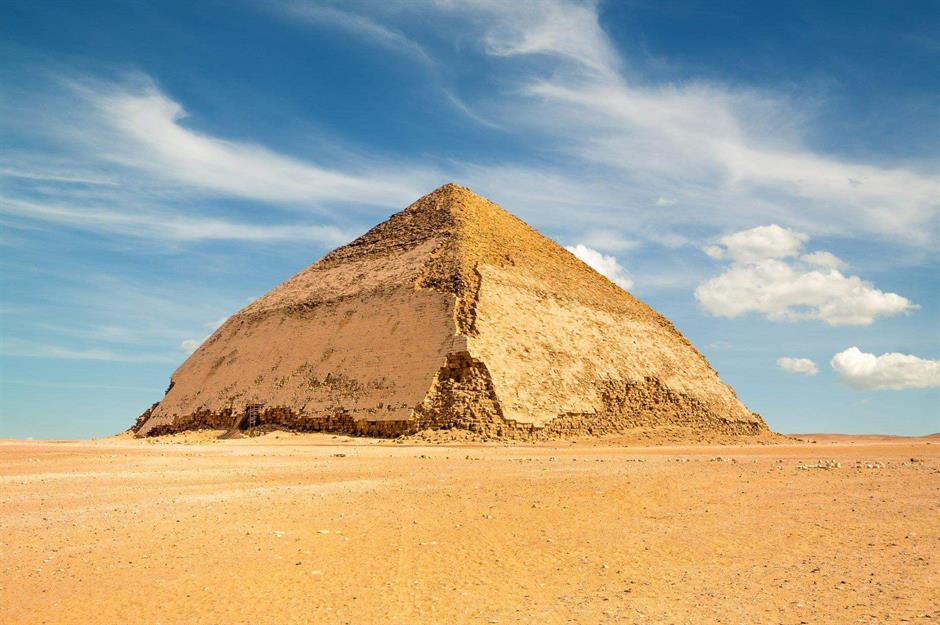
Dahshur is an ancient plateau located some 20 miles (32km) south of Cairo. Here you’ll find the Bent Pyramid, the second pyramid built by King Sneferu, who added to his straight-sided pyramid at Meidum with another unusual edifice.
A number of construction issues gave the pyramid its odd shape, with the lower half rising at an angle of 54 degrees to 154 feet (47m), before suddenly switching to a 43 degree angle. Following a lengthy closure for structural works, the Bent Pyramid's interior finally reopened to the public in 2019.
Bent Pyramid, Dahshur
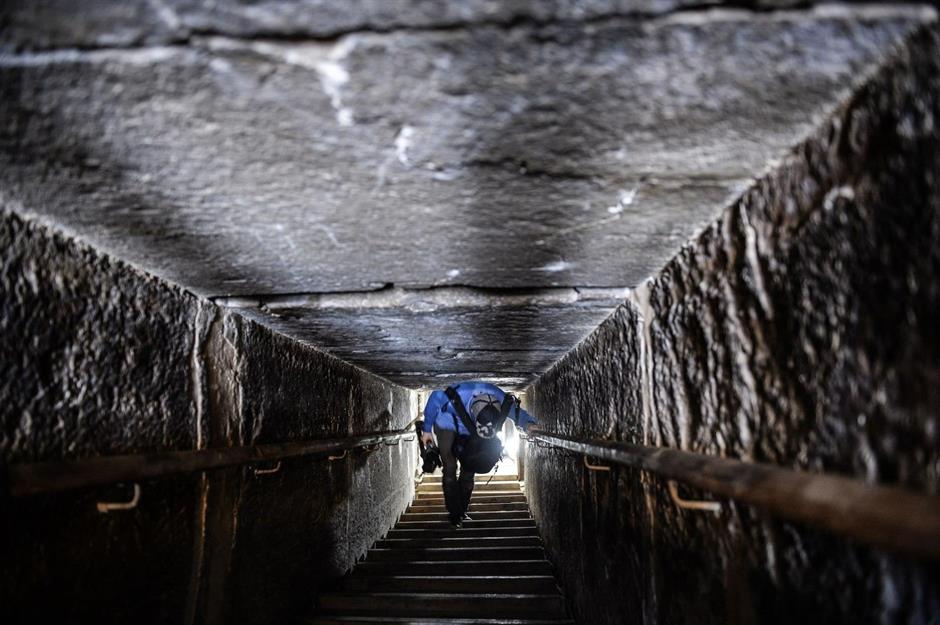
One of the more recent discoveries at the Bent Pyramid was made in 2021 by Anyextee, an author and tour leader. He revealed in a YouTube video that there was some graffiti dating to the pyramid’s rediscovery by the western entrance. It was left by Egyptologist John Shae Perring, who started his exploration of the pyramid in September 1839.
Anyextee also managed to document a "real-life Indiana Jones trap": a stone gate that would have been lowered across the passageway to block the entrance.
Bent Pyramid, Dahshur
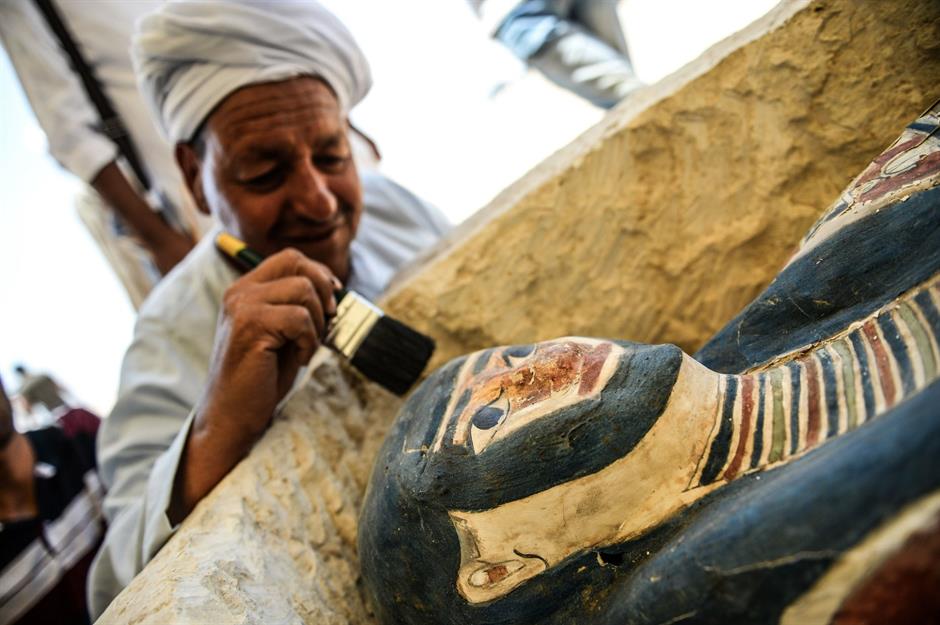
In 2019, a number of mummies were located in and around the Bent Pyramid. Most of the mummies were in excellent condition, having been preserved inside stone, clay and wooden sarcophagi.
The finds also included a number of funerary masks, all of which dated to the Late Period (664-332 BC) – much later than Sneferu’s 25th century BC reign. The Late Period is widely considered one of the last eras of true Egyptian rule before the Persians invaded around 525 BC.
Bent Pyramid, Dahshur
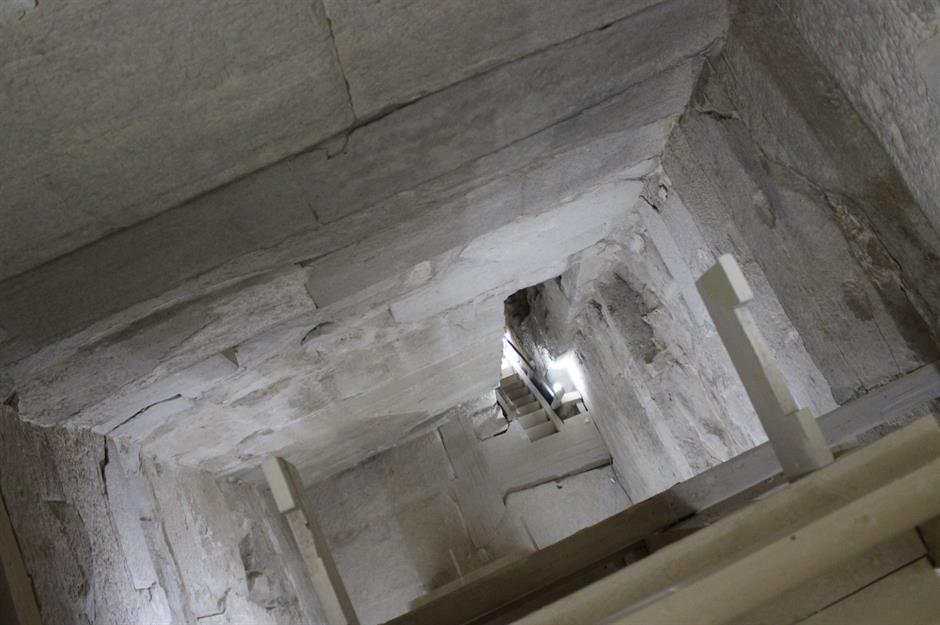
Alongside the 2019 reopening, visitors can also now visit a smaller, adjoining pyramid. It’s believed that this is where Queen Hetepheres I – the wife of Sneferu, mother of Khufu – was buried. It’s the first time this pyramid has been open to the public since it was first excavated in 1956.
Excavations at the site are still ongoing, but a visit to the Bent Pyramid is a great way to get a behind-the-scenes look at how the pyramids were laid out, and how they differed from one another.
Khafre Pyramid, Giza
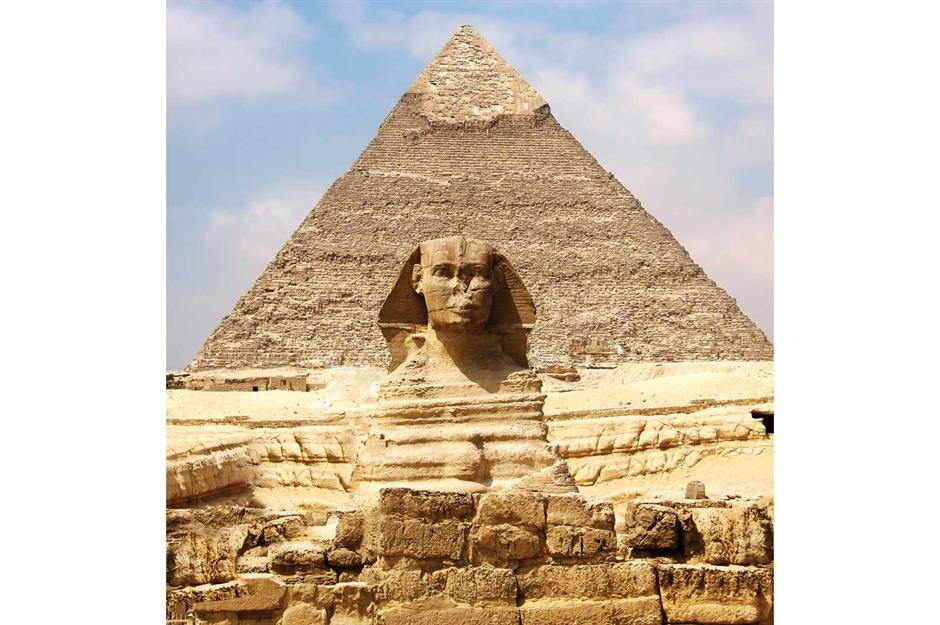
The Khafre Pyramid is the second largest pyramid in the Pyramids of Giza complex. King Khafre (2558-2532 BC) built this pyramid next to his father Khufu's, and it's situated 33 feet (10m) higher on the plateau, making it look deceptively larger than its taller neighbour.
Built roughly between 2520 and 2494 BC, the top of the pyramid maintains its outer casing of limestone while the rest has worn away, leaving it looking a little like a snow-capped mountain. It’s widely believed that the Great Sphinx in front of the pyramid was built for Khafre too.
Khafre Pyramid, Giza
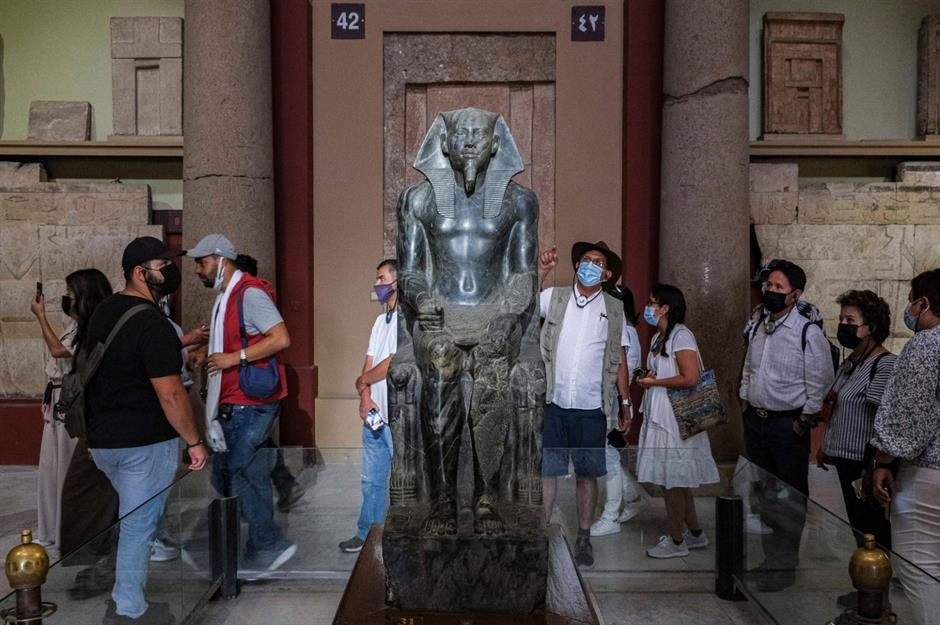
A number of life-sized and bigger-than-life-sized statues discovered at the Khafre Pyramid are now on display at the Egyptian Museum in Cairo. One of the most well-known is Khafre Enthroned. This funerary statue was discovered beneath the floor of the valley temple, and was supposed to provide a place of rest for Khafre’s ka (soul).
Carved out of a single block of stone, the throne on which Khafre is seated features lion paws, hieroglyphics, a royal cobra and the Egyptian god Horus. The pharaoh is also wearing a lined headdress – all these motifs symbolise his mighty power.
Khafre Pyramid, Giza
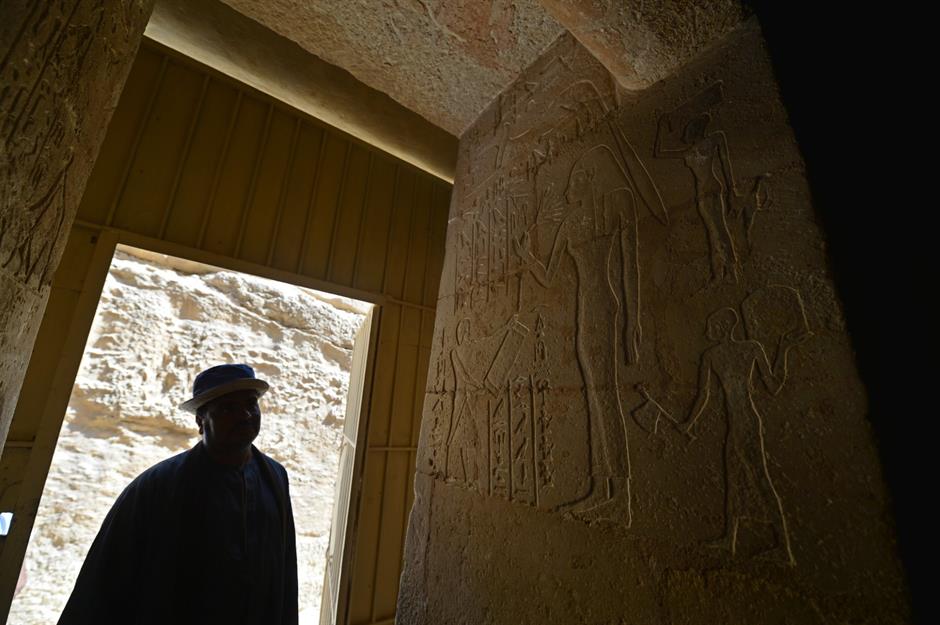
Unfortunately, the Khafre Pyramid was robbed repeatedly by tomb raiders over the years, dating back to Pharaoh Ramesses II himself, who is said to have lifted sections of the pyramid's limestone casing for his own temple. In the absence of artefacts (although a few were recovered), historians have analysed the different materials used for the pyramid.
Granite cladding was used in the upper descending passageway and there are gabled limestone beams supporting the burial chamber.
Djoser Pyramid, Saqqara
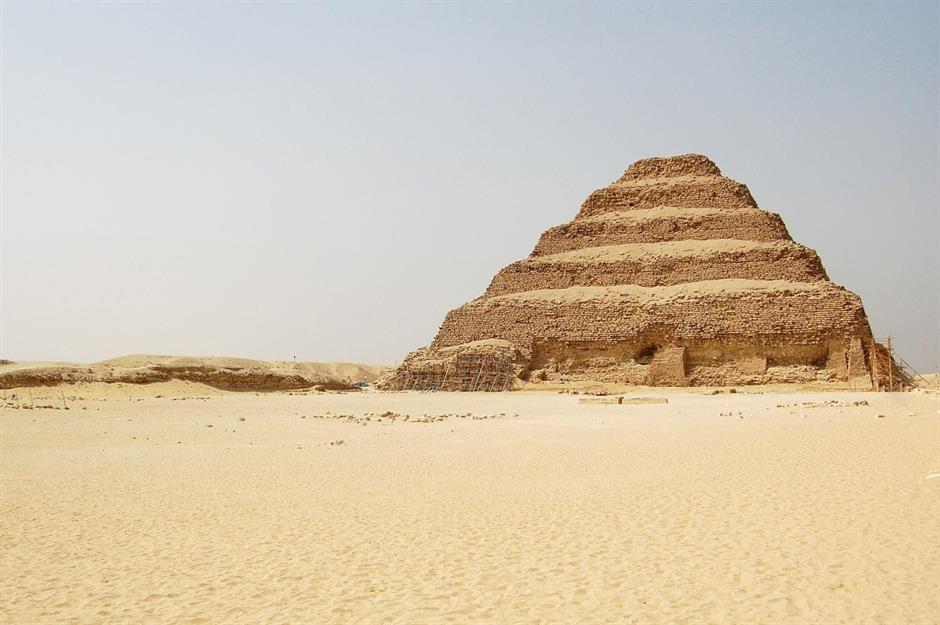
Possibly Egypt’s strangest-looking pyramid, the Djoser Pyramid is located in Saqqara in the ancient capital of Memphis. Djoser (2650-2575 BC) was the first pharaoh to use stone in a pyramid’s construction – before this, royal tombs were simple rectangular monuments made from clay bricks called mastabas.
The bizarre, tiered structure is the work of the architect Imhotep, who ‘stacked’ the mastabas to create this step pyramid – 204 feet (62m) high and the first of its kind.
Djoser Pyramid, Saqqara
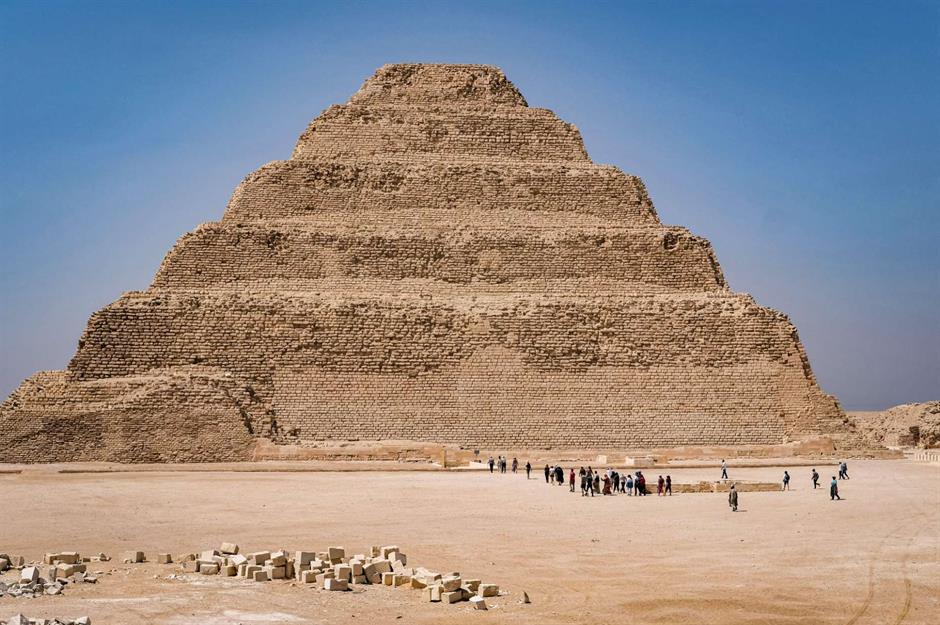
Djoser’s sarcophagus was laid deep inside the burial chamber, along with 40,000 stone vessels, bowls and urns of various sizes. They were all inscribed with the names of pharaohs from the 1st and 2nd dynasties, which is curious because Djoser was one of the first kings of the 3rd dynasty.
While it’s still not completely understood why they were found here, some believe that the earlier pharaohs' own tombs were robbed, and in order to protect their souls Djoser collected their urns and sealed them inside his own tomb.
Djoser Pyramid, Saqqara
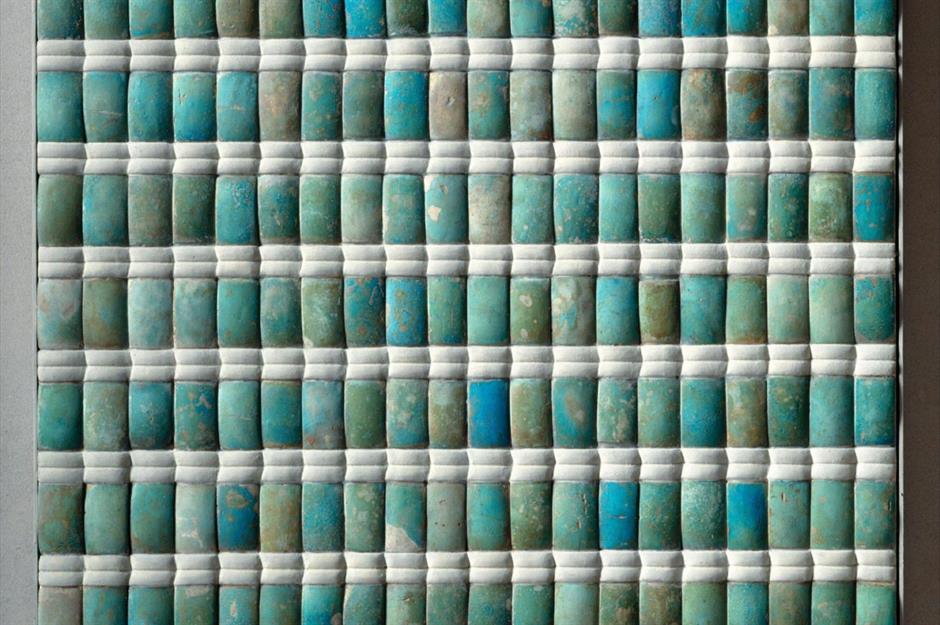
A series of beautiful blue and green tiles were uncovered in the pyramid's galleries and burial chamber. These once lined the walls to imitate the decorative sheets of reeds that would originally have hung in the king’s royal palace, while the blue and green colours symbolised rebirth.
The ceramic tiles were created in the faience glazing style, and restored sections are on display at the Imhotep Museum in Saqqara and the Metropolitan Museum of Art in New York.
Djoser Pyramid, Saqqara
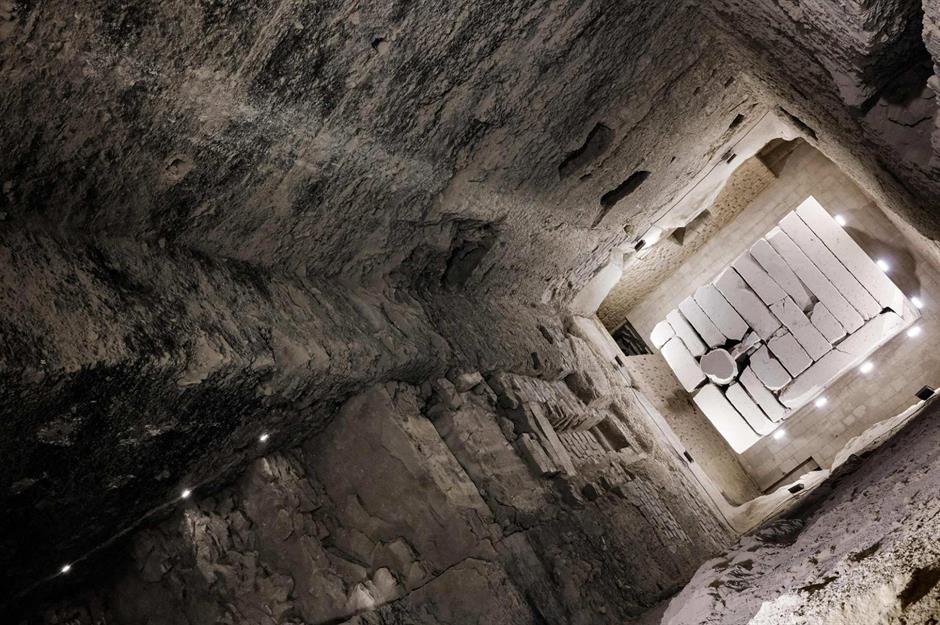
Prior to much-needed restoration work in 2006, the Djoser Pyramid was on the verge of collapse. The work included reassembling and restoring the granite sarcophagus, adding paved floors to the cemetery, installing a lighting system and adding a ladder to access the cemetery and well. The walls and ceilings were also strengthened, and more faience tiles were installed.
The Djoser Pyramid finally reopened to the public in 2020, allowing visitors to again experience one of Egypt's most important UNESCO World Heritage Sites.
Red Pyramid, Dahshur
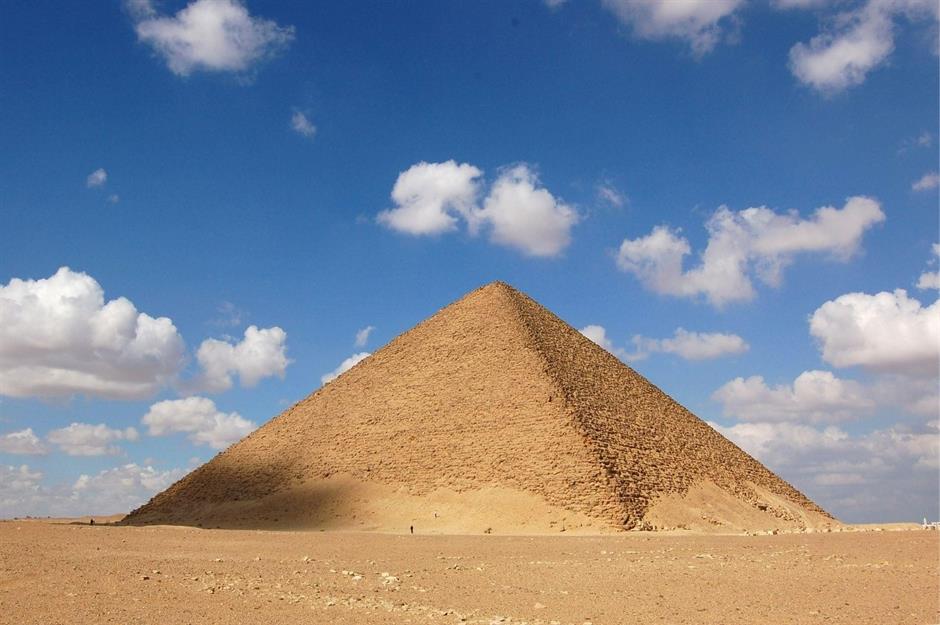
Like the Bent Pyramid, the Red Pyramid is located on the ancient plateau of Dahshur, roughly 25 miles (40km) south of Cairo. Although the pyramid was once covered with white limestone the casing was later removed, exposing the rust-coloured stone beneath and giving it the nickname we use today.
Built for the pharaoh Sneferu, exactly how long it took to build is still disputed, but construction is likely to have taken place between 2575 and 2551 BC.
Red Pyramid, Dahshur
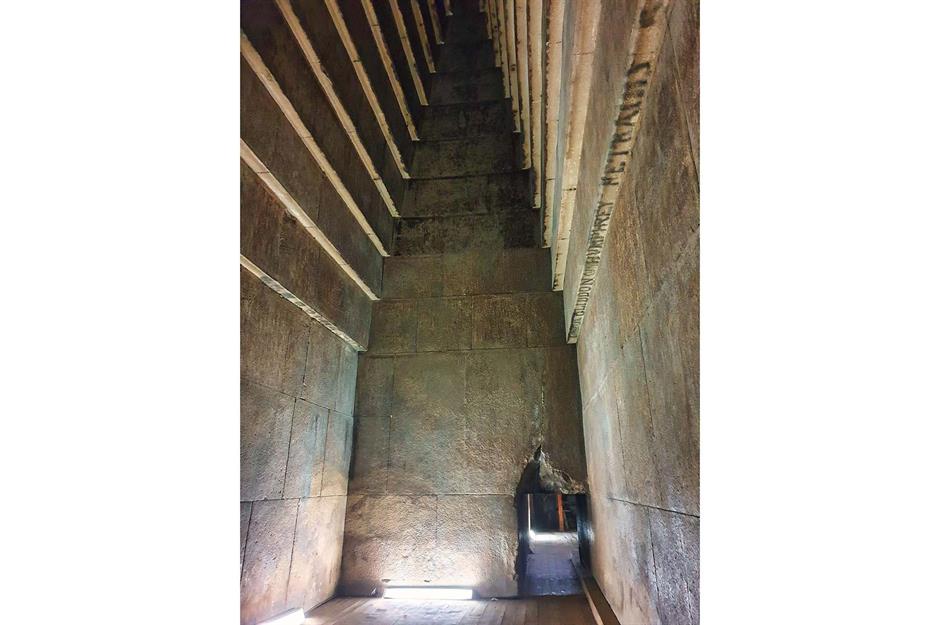
Sometimes known as the North Pyramid due to its position half a mile north of the Bent Pyramid, the Red Pyramid is the third largest in Egypt after the pyramids of Khufu and Khafre in Giza. It’s still celebrated as the first ‘true’ pyramid, due to its sloping sides and lack of steps.
Visitors today can explore its fascinating 4,000-year history by stepping inside and viewing the magnificent burial chamber.
Red Pyramid, Dahshur
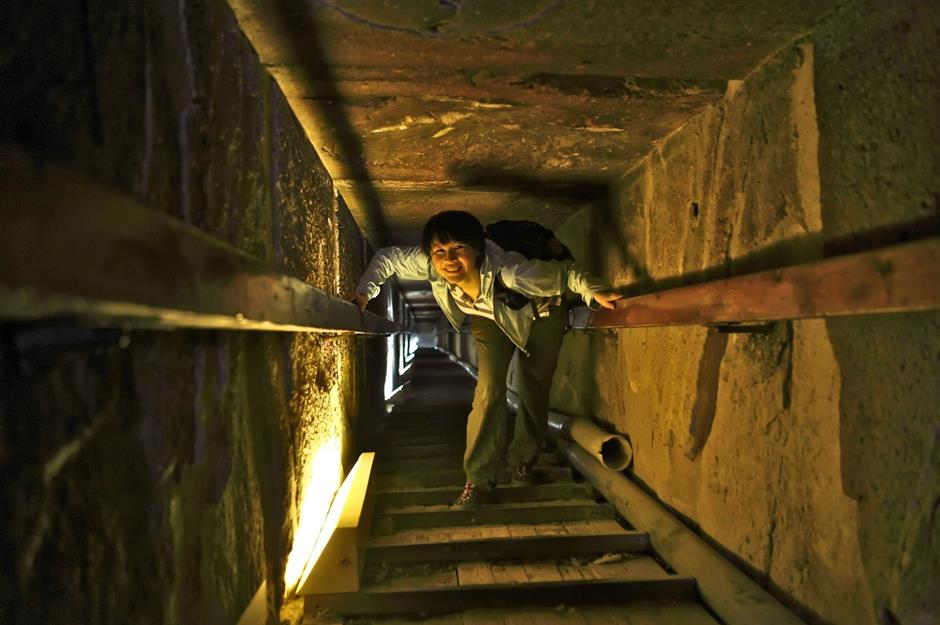
The Red Pyramid's passageways and chambers are unique among Egyptian pyramids. All three of the main chambers feature corbelled (bracketed) ceilings, supporting the roughly two million tonnes of stone above.
Unlike other pyramids that have collapsed or needed restoration work, such as the Bent and Djoser pyramids, to this day the Red Pyramid hasn’t suffered any structural issues – not even a crack.
Red Pyramid, Dahshur
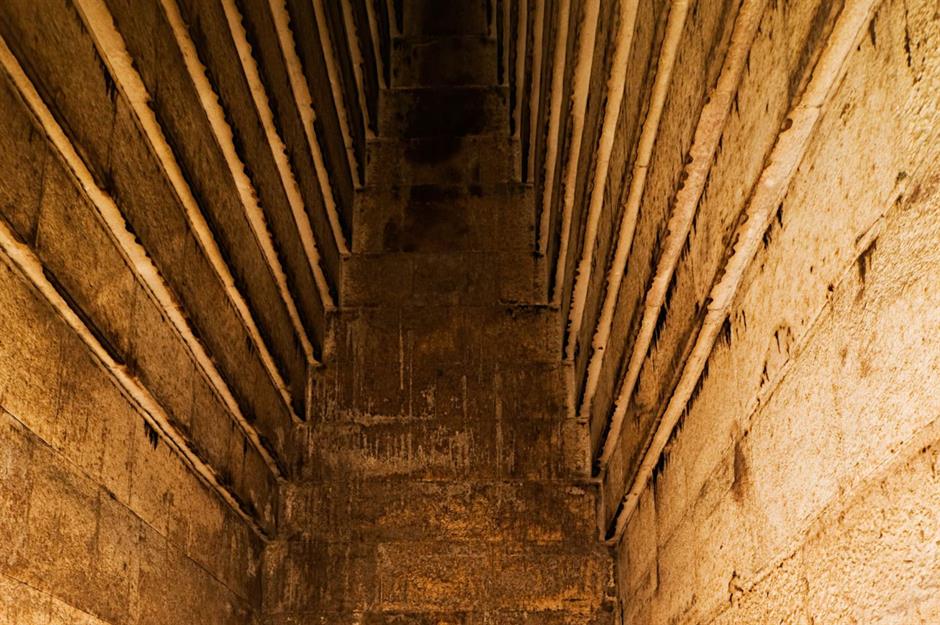
Even more unusual is the location of the second chamber, which is found directly beneath the apex (or centre point) of the pyramid. No other pyramid uses this design.
While the final chamber has been made accessible to modern visitors through the addition of a staircase, excavations haven’t located any further passageways inside the pyramid.
Menkaure Pyramid, Giza
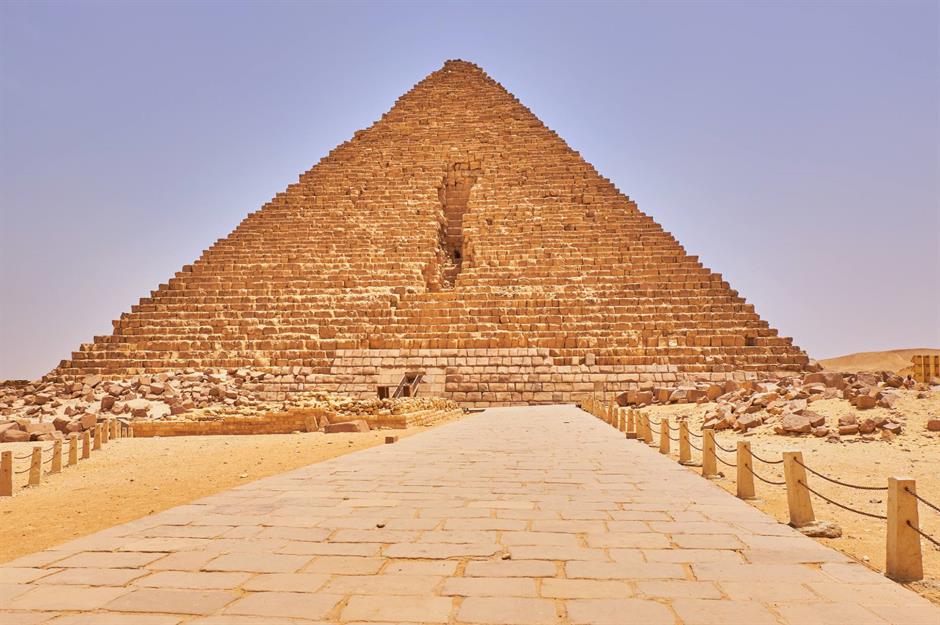
The Menkaure Pyramid is the last and smallest of the three so-called Pyramids of Giza, standing at just 213 feet (65m) tall. Completed in the 26th century BC, it was built for King Menkaure, and sits on the same plateau as the pyramids of his father (Khafre) and grandfather (Khufu).
Menkaure Pyramid, Giza
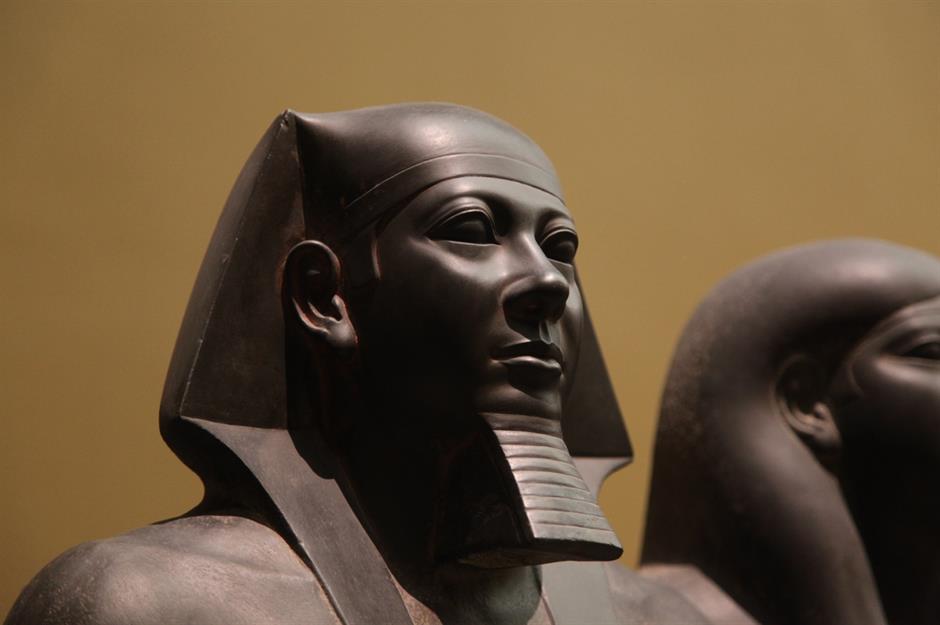
Many statues from inside the tomb depict Menkaure accompanied by gods and other figures. One greywacke stone statue recovered from the pyramid depicts Menkaure and his wife standing side by side.
It's a classic example of Old Kingdom royal tomb sculpture, with both the king's arms down by his sides and with one leg stepped forward.
Userkaf Pyramid, Saqqara
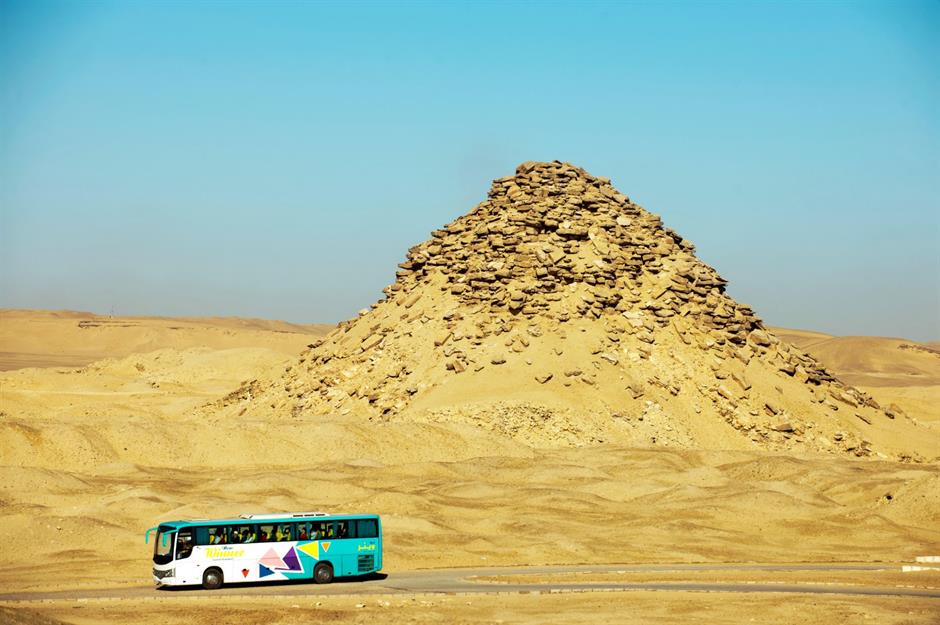
The Userkaf Pyramid doesn't quite have the same wow factor as some of its fellows on this list, but it does have an interesting history. King Userkaf (2494-2487 BC) was the first pharaoh of the 5th dynasty, and chose to build his pyramid at Saqqara, where the local limestone is much thinner than it is at other tomb locations like Giza.
This, along with weak structuring, later led the pyramid to collapse, earning itself the unfortunate moniker ‘Heap of Stone’. Visitors today can see that it more resembles a conical hill than an impressive royal pyramid.
Userkaf Pyramid, Saqqara
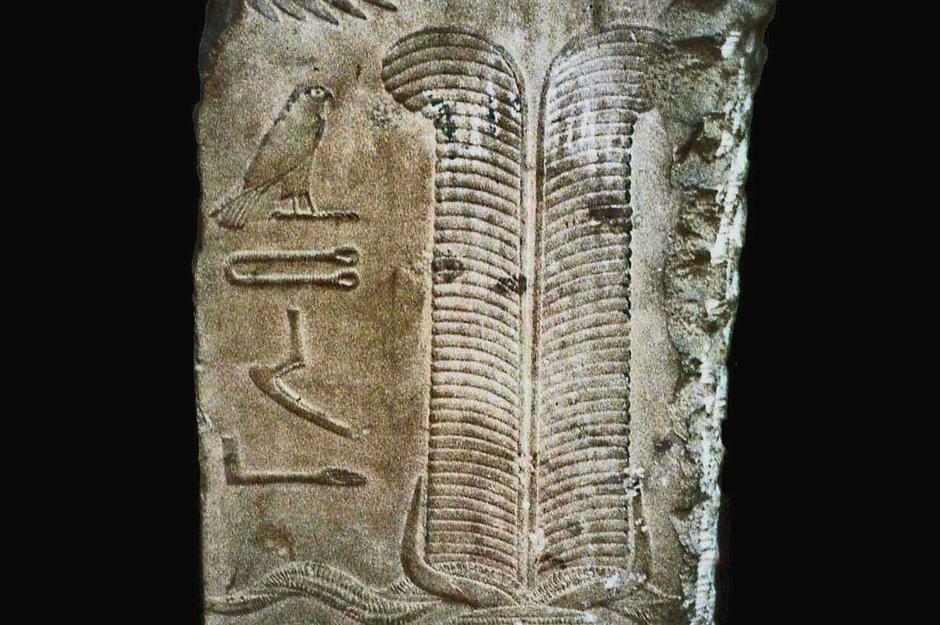
While much of the Userkaf Pyramid remains unexcavated, a number of funerary stone reliefs were recovered from the king’s funerary temple. These would have been placed along the courtyard walls, and included hunting, fishing and nature scenes which were common depictions in 5th dynasty royal temples.
One limestone relief depicts birds in a papyrus thicket, two intricately carved birds in a marsh along the Nile and the names of Upper and Lower Egyptian estates connected to the cult of Userkaf. The reliefs would have been colourfully painted.
Userkaf Pyramid, Saqqara

In 2018, archaeologists discovered a number of tombs on the edge of the Userkaf Pyramid complex containing not only sarcophagi but also mummified cats. Animals were mummified as religious offerings, and the ancient Egyptians believed cats held special positions in the afterlife.
In total three tombs contained mummified cats, with one featuring a large bronze statue of a cat dedicated to a goddess. They also found mummified scarab beetles – highly unusual for such tombs – which were believed to symbolise the sun god Ra.
Unas Pyramid, Saqqara

King Unas (2465-2325 BC) ruled during the 5th dynasty, and his pyramid at Saqqara was once 141 feet (43m) tall, but it fell into decay after his death and later Egyptian kings removed and reused most of the stones.
The pyramid has long been in a sorry state, but you can still see an inscription left by Prince Khaemwaset, the son of Ramesses II and High Priest of Ptah in Memphis, who restored the monument in the 13th century BC.
Unas Pyramid, Saqqara
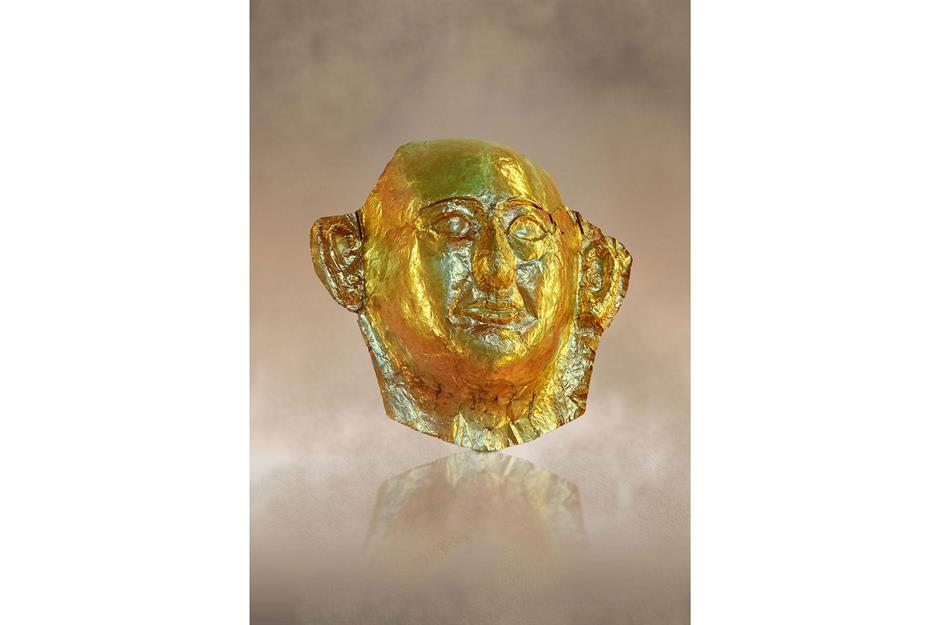
Funerary masks (or death masks) were placed over the faces of mummies. They resembled the deceased, so they could help the soul (ka) find its body in the afterlife.
Pictured here is an artefact thought to be Prince Khaemwaset's funerary mask, which was found in the Serapeum of Saqqara, a burial place near Memphis.
Unas Pyramid, Saqqara
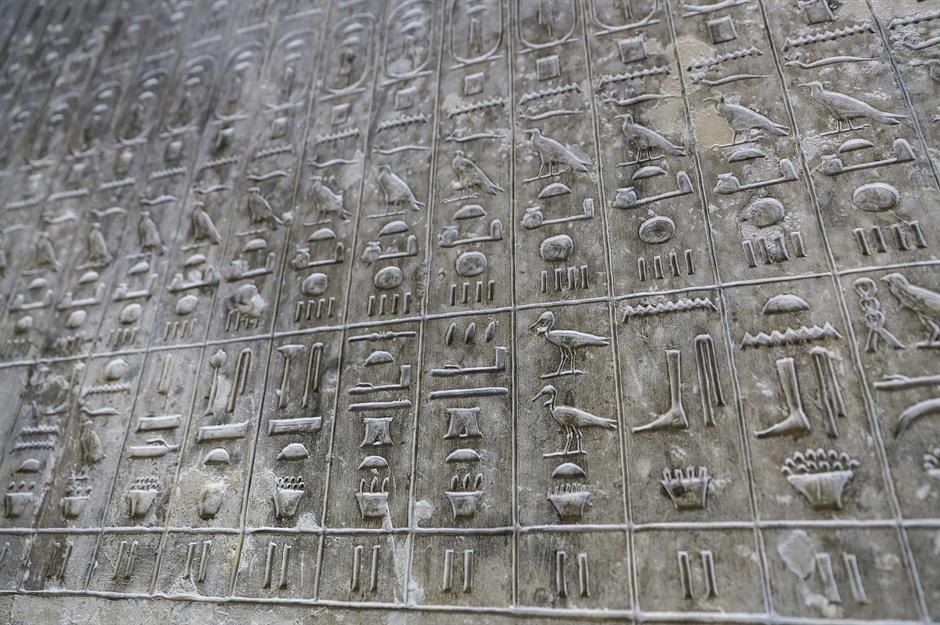
The Unas Pyramid was the first of its kind to feature 'pyramid texts', a modern-day name given to spells (or 'utterances') that adorned tomb walls and helped the spirit navigate its journey to the underworld.
These were instructional texts and no two were the same, although one seemingly essential spell that was frequently included discussed the sun god Ra.
Unas Pyramid, Saqqara

Inside King Unas's burial chamber was the sarcophagus. The chamber's ceiling was beautifully patterned with gold stars against a night-blue sky.
While the contents were robbed long before excavations could begin, the mummified remains of a left arm, hand and skull were found amongst the debris. Could these belong to the former pharaoh?
Unas Pyramid, Saqqara
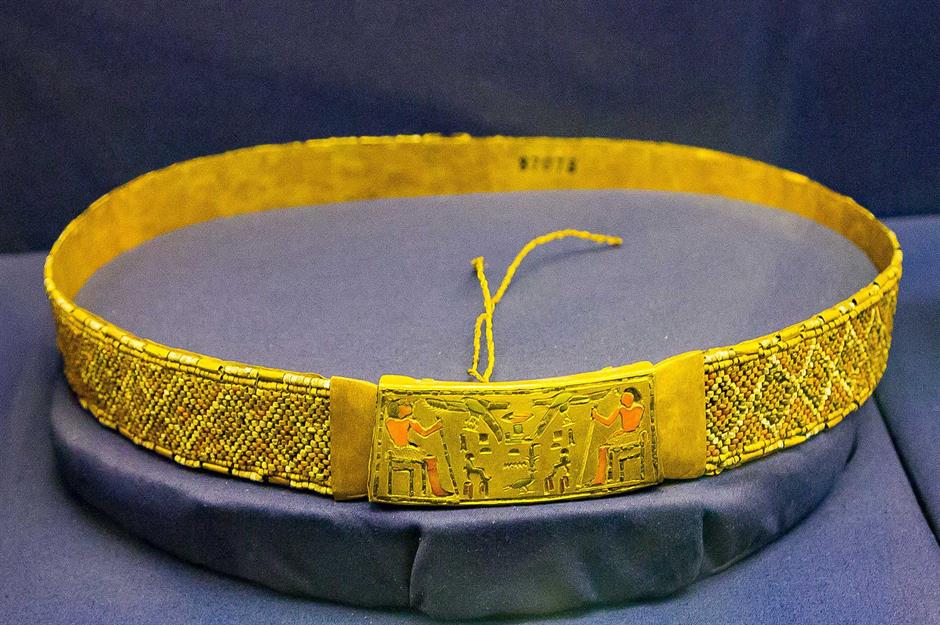
Also found at the Saqqara site was this thin gold band measuring 90cm, placed among the mummy bandages of Prince Ptah-Shepses. Dating back to 2323-2150 BC, red carnelian (a gemstone) and volcanic glass beads form angular, geometric patterns, while hieroglyphics are inscribed on the buckle.
Teti Pyramid, Saqqara
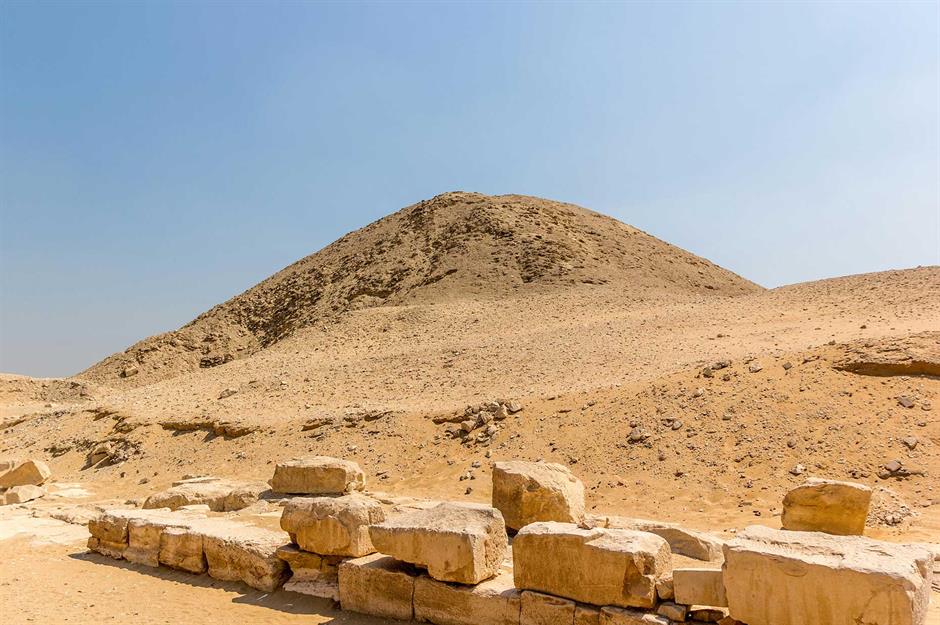
The Teti Pyramid was once 172 feet (52m) tall and housed the deceased King Teti, the first pharaoh of the 6th dynasty (roughly 2345-2323 BC, although sources vary). Located in Saqqara, the pyramid was constructed with a core of stone blocks encased in limestone.
Inside were typical painted reliefs depicting offerings to the gods, plus star-patterned ceilings and three niches which may have held statues of the king. Today the site looks more like a lopsided mound, but it hasn't completely collapsed and you can still take a tour inside.
Teti Pyramid, Saqqara
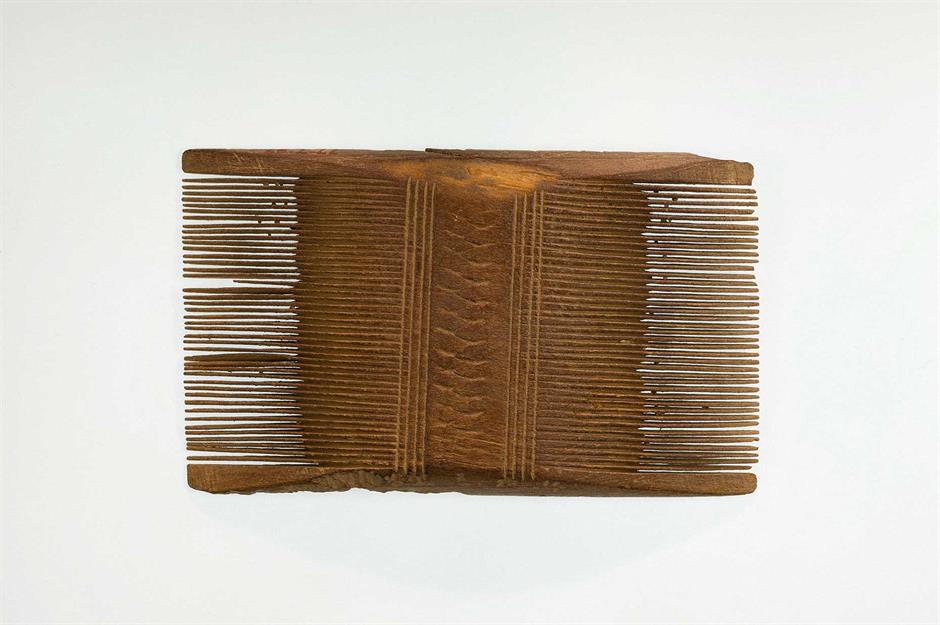
While many of the pyramid's external blocks have been looted over the years, interesting artefacts have been recovered, and a large cemetery was found in front of the pyramid housing the remains of Teti's officials.
Pictured here is a comb believed to be from the tomb of Teti himself. The intricate item is made of wood and is only 11cm long. It's on display at New York’s Metropolitan Museum of Art.
Teti Pyramid, Saqqara
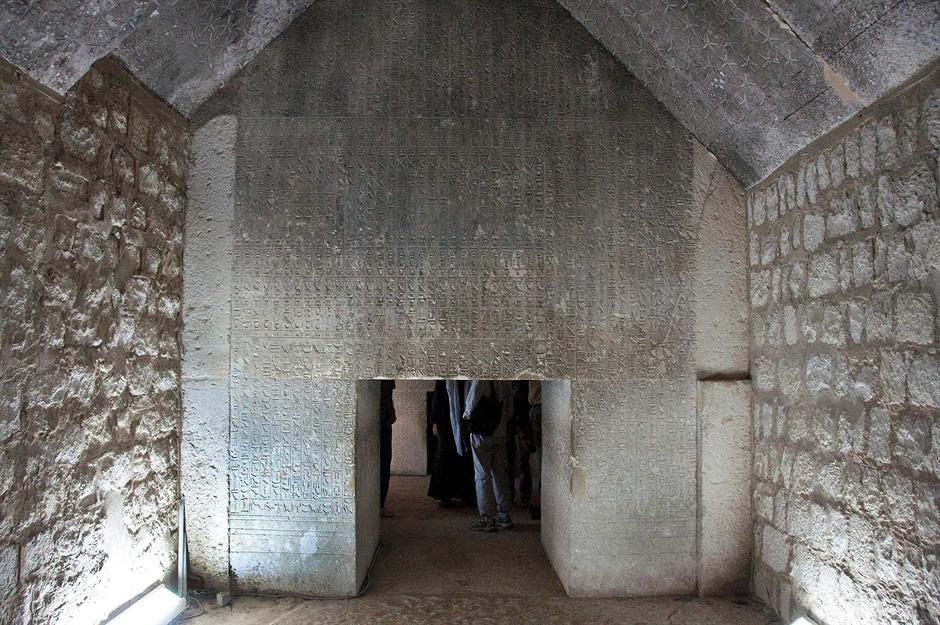
Teti's burial chamber was located beneath the pyramid, along with his well-preserved basalt sarcophagus. Like the Unas Pyramid, the Teti Pyramid's walls were also adorned with pyramid texts.
These funerary texts first appeared in the 5th dynasty of the Old Kingdom (2465-2323 BC), and were succeeded by so-called 'coffin texts' during the Middle Kingdom (inscriptions found inside sarcophagi that tended to focus on the underworld). Both went on to influence the New Kingdom's Book of the Dead.
Teti Pyramid, Saqqara

In 2022, archaeologists digging at the Saqqara site discovered hundreds of coffins and well-preserved mummies dating to the New Kingdom (approximately 1539-1077 BC) in a series of interconnected tunnels at the Teti Pyramid. Some of the artefacts may even have belonged to Tutankhamun's closest generals and advisors.
Statues of the god Ptah-Sokar, shabtis, a metal axe and pieces of an ancient Egyptian game were also found, with a selection now in the hands of the Grand Egyptian Museum.
Pyramid of Neith, Saqqara
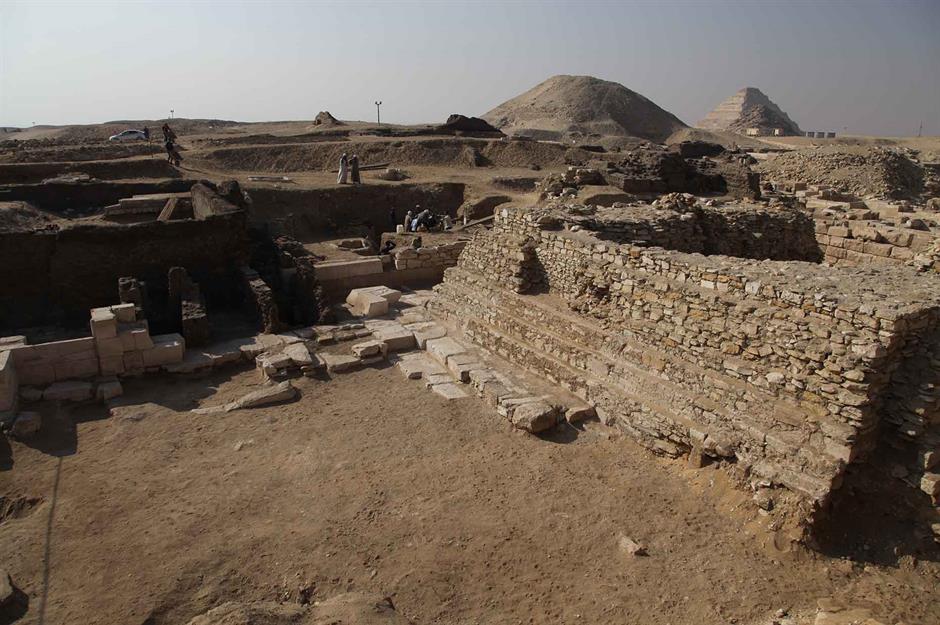
At the same excavations, archaeologists also uncovered the pyramid of a previously unknown Egyptian queen named Neith. Pictured here is the excavated site, with the Teti and Djoser pyramids visible in the background.
Neith was likely named after the Egyptian goddess of creation, wisdom, weaving and war, as well as being worshipped as a funerary goddess.
The Book of the Dead
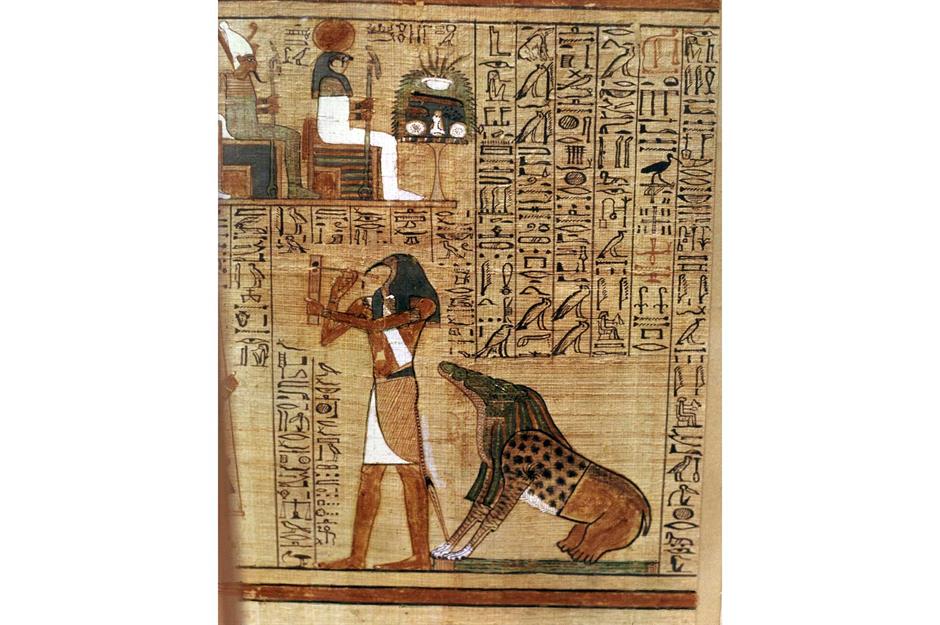
The Book of the Dead is an umbrella term for a series of ancient Egyptian texts. Specific utterances were typically copied onto papyrus scrolls and placed in tombs, like the fragment from the tomb of Theban scribe Ani in Luxor pictured here, which dates back to 1250 BC and is on display at the British Museum.
This scene depicts the Hall of Judgement, with Ani muttering Spell 30B as his heart is weighed on the scales of justice, determining whether he'd make it to paradise. Spells from the Book of the Dead also adorned mummy bandages and even Tutankhamun's golden death mask.
The Book of the Dead
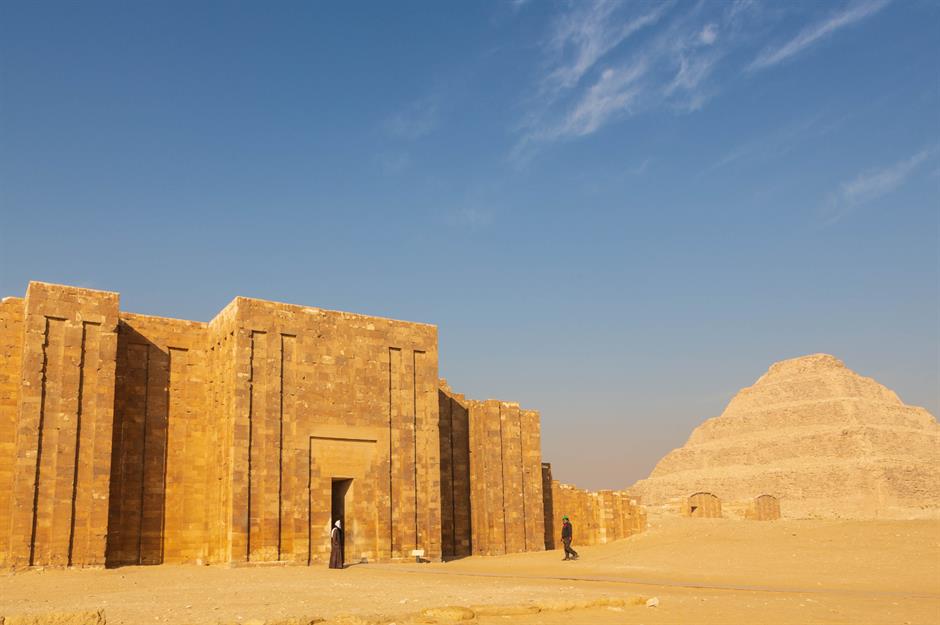
In early 2023, archaeologists at Saqqara made a remarkable discovery: a 52-foot (16m) papyrus scroll containing spells from the Book of the Dead. It was the first complete papyrus discovery in a full century, enhancing modern understandings of ancient Egyptian belief in magic.
Work to restore the lengthy papyrus has been carried out at the Egyptian Museum Laboratory in Cairo, with a view to exhibiting it in Giza's Grand Egyptian Museum in due course.
Valley of the Queens, Luxor
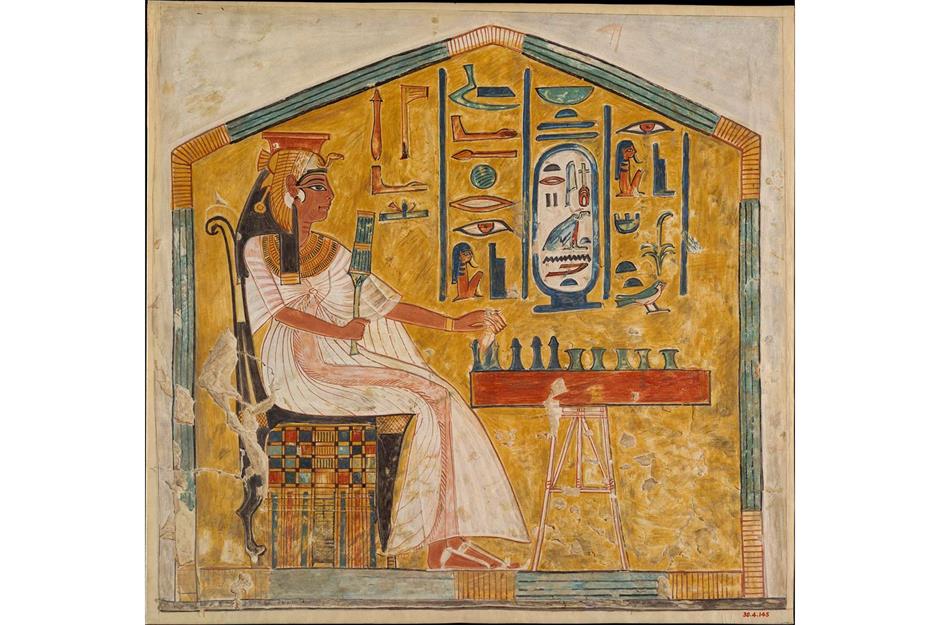
This colourful painting of Queen Nefertari was found in her tomb in the Valley of the Queens in Luxor (ancient Thebes). The royal lady was buried in a small rock-cut temple and is depicted here playing a popular ancient Egyptian game called 'senet'.
The game had symbolic meaning; senet meant 'passing', and it was seen as a parallel for the journey into the afterlife.
Valley of the Kings, Luxor
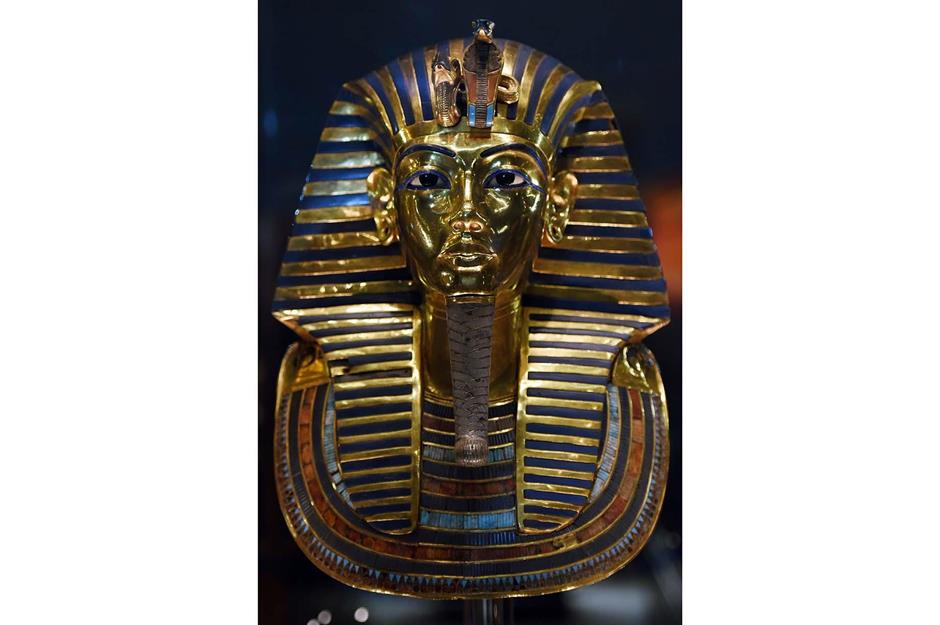
Tutankhamun's tomb is the most famous in the Valley of the Kings, even though it wasn't discovered until 1922. His legendary funerary mask was made from 22lbs (10kg) of solid gold, as well as lapis lazuli, quartz, glass and obsidian.
His body was wrapped in resin-soaked bandages and was accompanied by items that would help him into the afterlife. Some have speculated that the tomb he was found in seems second-hand – could it have been intended for his stepmother, Queen Nefertiti?
Valley of the Kings, Luxor
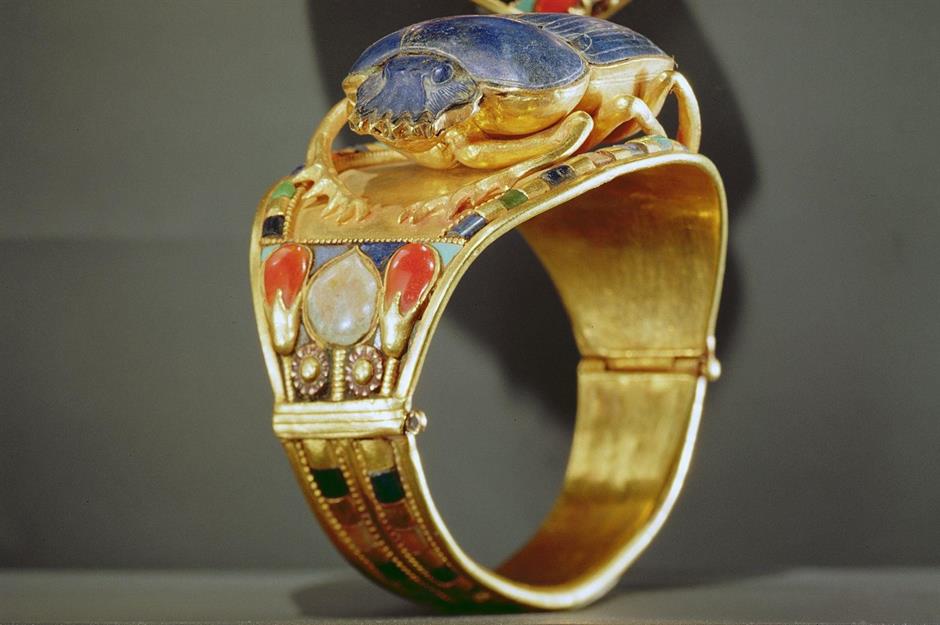
Ornate jewellery was commonly stored inside Egyptian pyramids, either as divine offerings or to accompany the deceased into the afterlife. This spectacular scarab bracelet is just one of the items found inside Tutankhamun's tomb.
Formed from gold and lapis lazuli, the intricate trinket is a gorgeous example of ancient craftsmanship. Regardless of gender or status, the Egyptians loved jewellery, and over the centuries endless precious charms and ornaments have been discovered.
Valley of the Kings, Luxor
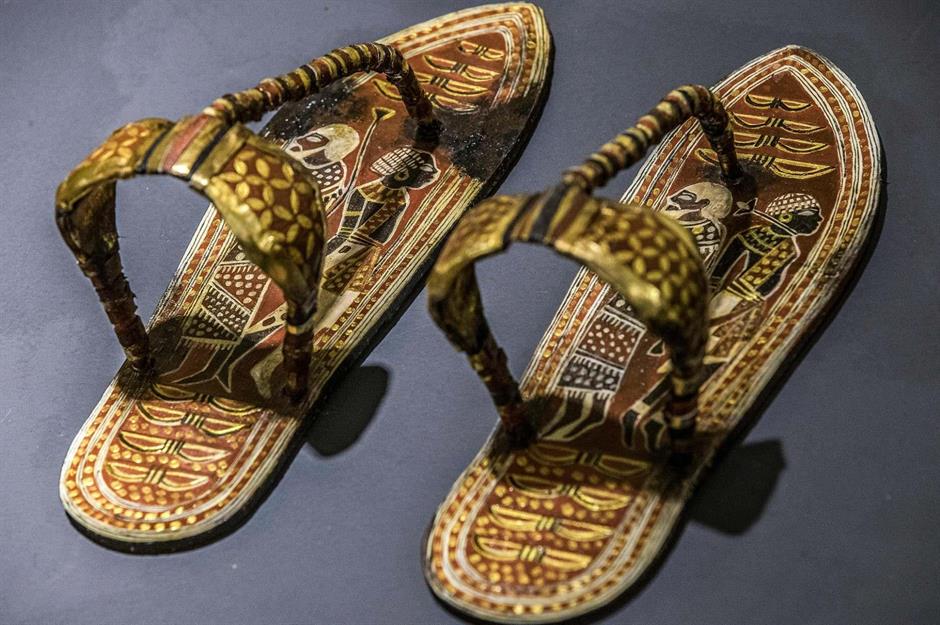
Sandals and toe stalls (golden toe coverings) were discovered on many Egyptian mummies, including Tutankhamun. Pictured here is a replica of a pair recovered from King Tut's tomb, where some 80 pairs were found in total.
These funerary items served symbolic purposes; on each sole are figures and arches representing Egypt’s nine traditional enemies, which the pharaoh symbolically trod on.
Royal necropolis of Tanis, Nile Delta
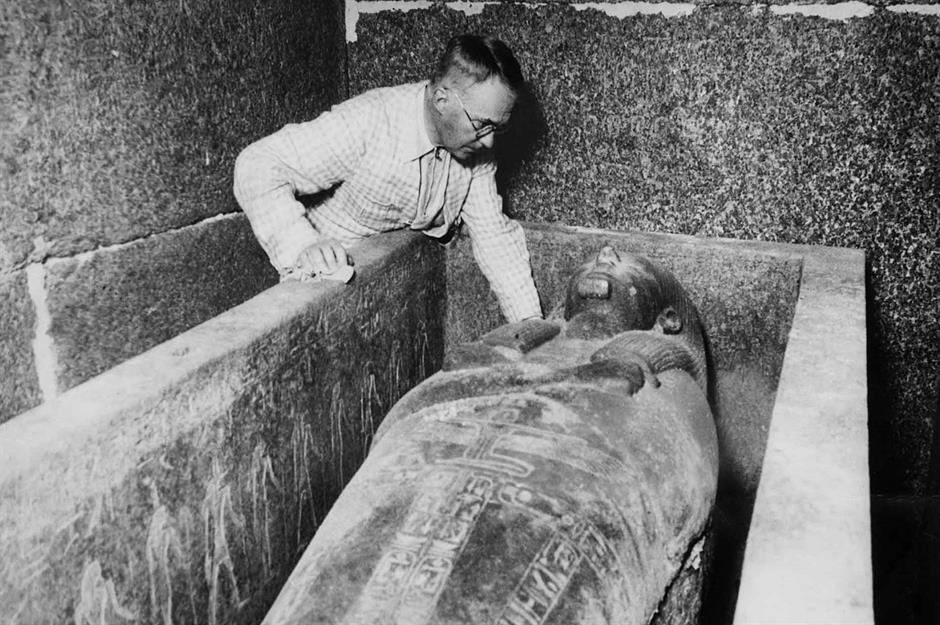
In 1939, French Egyptologist Pierre Montet discovered the royal necropolis of Tanis. The underground site was almost completely untouched, which was hugely significant as not a single fully intact royal tomb had been found in Egypt until Montet's find.
Kings and princes from the 21st and 22nd dynasties were buried in the necropolis complete with stone sarcophagi, silver coffins and copious amounts of gold and silver. Dubbed the Tanis Treasures, Montet's discovery was just as remarkable as Howard Carter's Tutankhamun find.
Royal necropolis of Tanis, Nile Delta
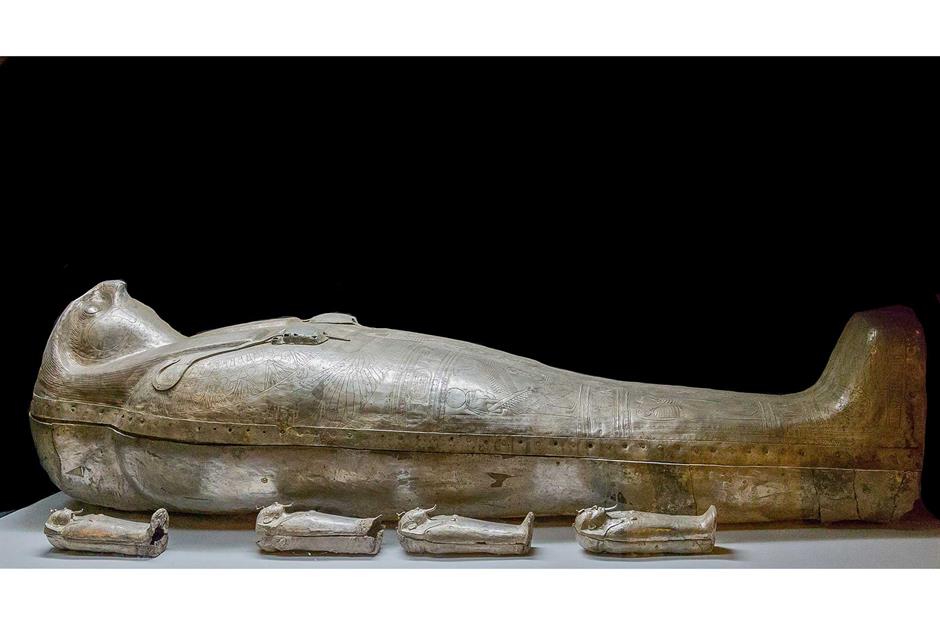
This striking silver coffin is arguably the most famous of the Tanis Treasures. The priceless coffin contained the mummy of Shoshenq II, a 22nd-dynasty pharaoh unknown until Montet's discovery.
Unusually, the coffin uses a falcon instead of the king's head, and the miniatures surrounding his coffin contained his organs – a stark contrast to the canopic jars more commonly used.
Royal necropolis of Tanis, Nile Delta
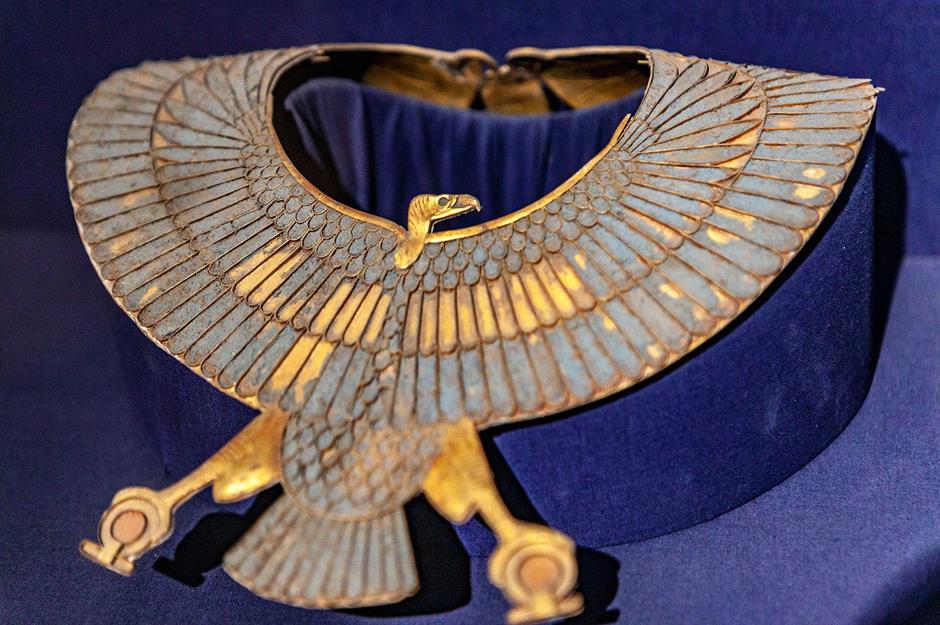
Also found inside Shoshenq II's tomb was this breastplate-like collar. While the colours have faded slightly, you can still get a sense of just how opulent it must have been.
The jewellery piece is shaped like a falcon and depicts the goddess Nekhbet, who often appeared in vulture form and hovered above kings holding the shen (circle, or sun disc) to represent eternity.
Royal necropolis of Tanis, Nile Delta
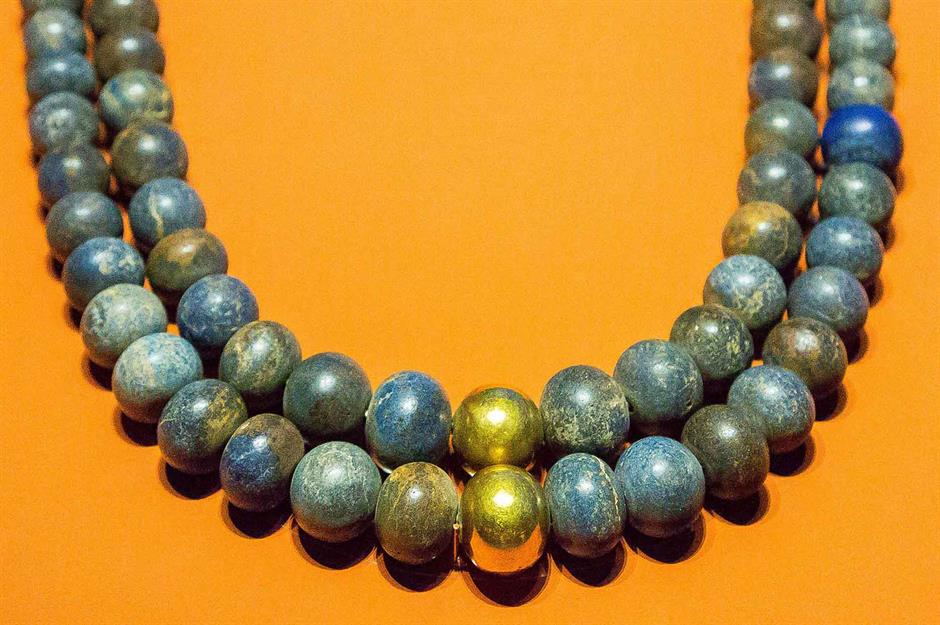
This beaded necklace was found in king Psusennes I's tomb. The two rows of beads are made from lapis lazuli with two golden beads in the middle, and date back to roughly 1069-945 BC.
Unusually, there's an Assyrian inscription on one of the beads, and historians are still unsure as to why this foreign item was found in an Egyptian king's tomb.
Royal necropolis of Tanis, Nile Delta
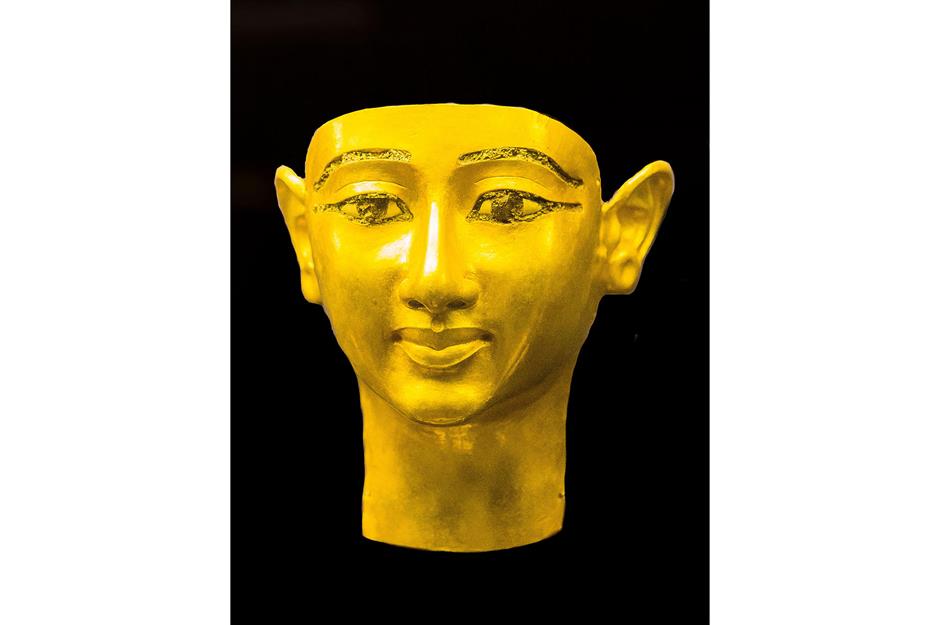
Wendjebauendjed was an army general, dignitary and high priest during King Psusennes I's reign (circa 1044-994 BC). While Wendjebauendjed wasn't of royal descent, his tomb was uncovered inside the royal necropolis, suggesting that he was a figure of great importance.
His funerary mask is detailed with a slight smile and the inlaid eyes are made of glass, but you'll spot that the ears aren't symmetrical – the left protrudes further than the right.
Royal necropolis of Tanis, Nile Delta
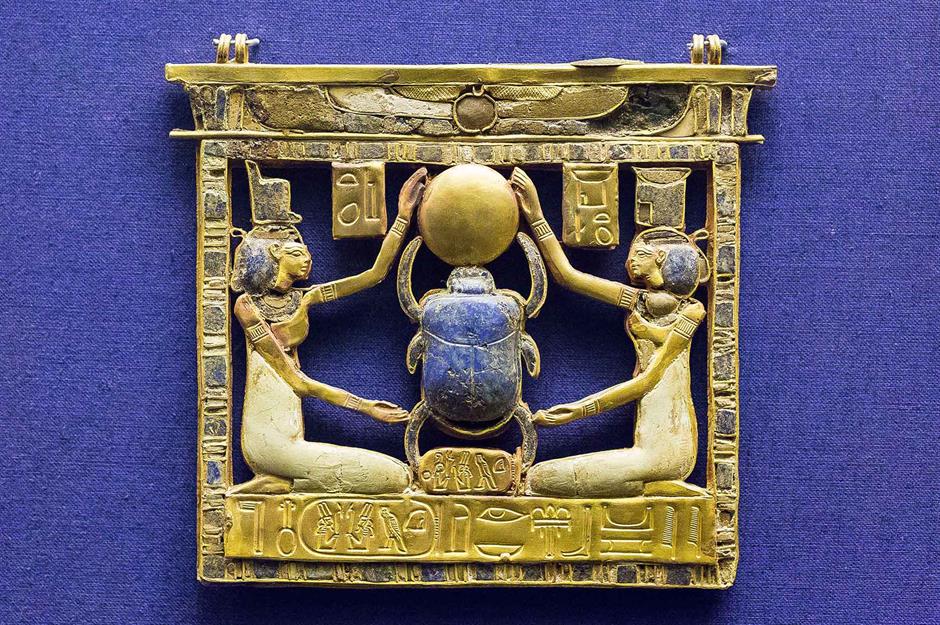
Discovered inside the tomb of king Amenemope (a 21st-dynasty pharaoh) was this detailed pectoral brooch. At the centre is a lapis lazuli scarab touching the golden sun disc, representing rebirth.
The scarab is flanked by the goddesses Isis and Nephthys, who protected the wearer, while along the bottom runs a cartouche, an inscription of the king's name.
Tomb of Meru, Luxor
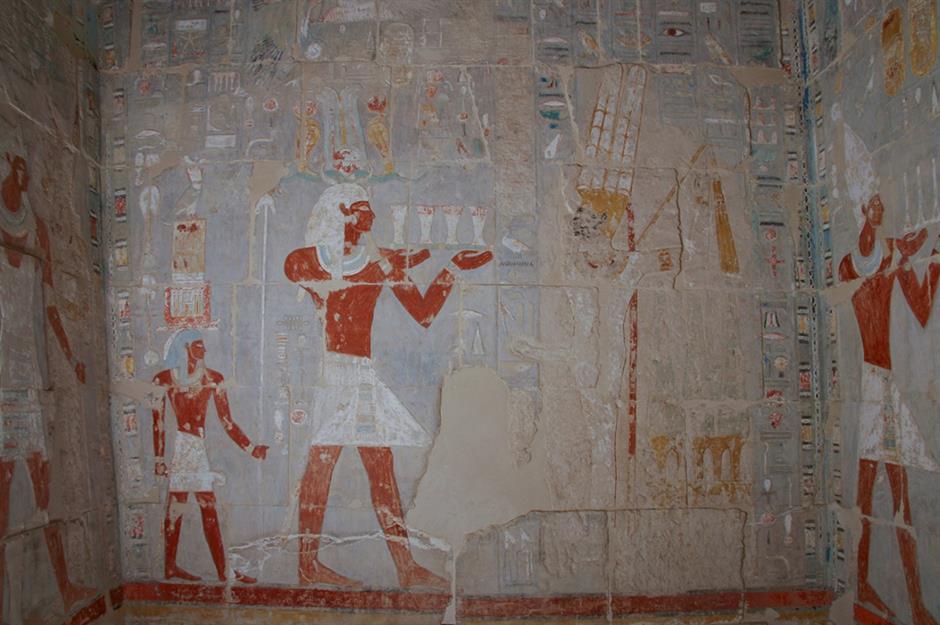
In February 2023, Egypt opened one of its most ancient monuments to the public for the first time. The 4,000-year-old Tomb of Meru, situated on the Nile's western bank in Luxor, was built for a high-ranking official in the court of King Mentuhotep II (who died in 2004 BC).
The tomb, located on the North Asasif necropolis, is close to the mortuary temple of Mentuhotep II. Inside the rock-hewn tomb is a collection of elaborate murals and a stone sarcophagus, which Egyptology enthusiasts are now able to enjoy.
Tomb of Meru, Luxor
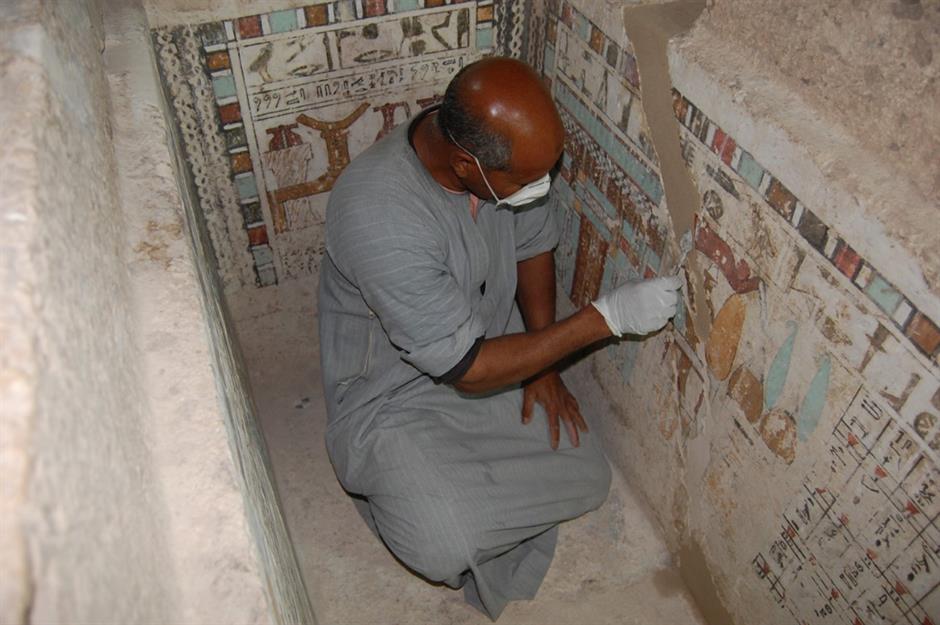
Meru's Tomb was restored by a joint team of archaeologists from the Egyptian Ministry of Antiquities and the University of Warsaw, Poland. It's not the first time the tomb has been touched: in 1996, some of the wall paintings were restored by an Italian team.
The wall paintings are especially significant, because the technique of painting directly onto lime plaster is unusual.
Tomb of Meru, Luxor
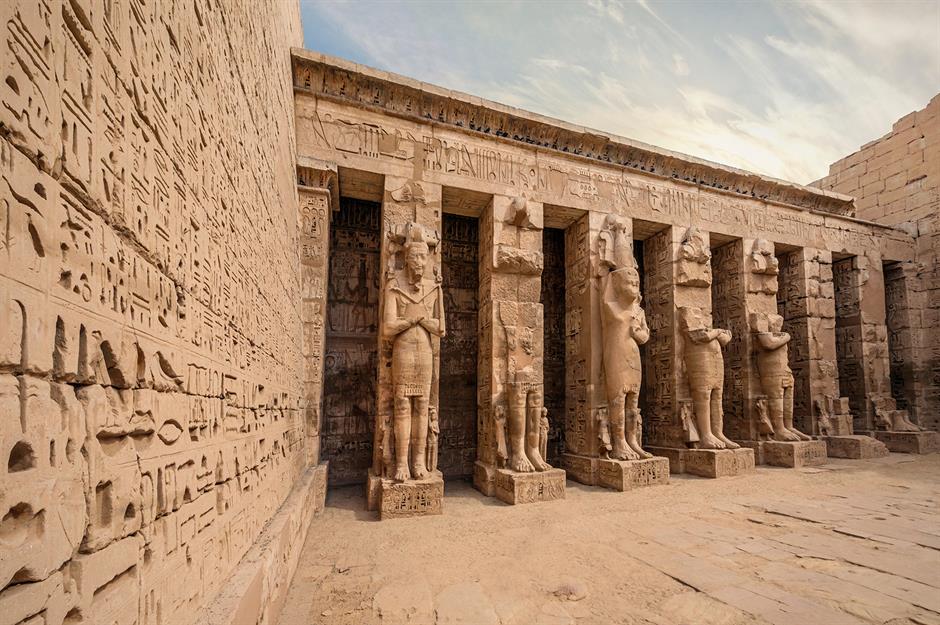
As you might imagine, Luxor is filled with other ancient Egyptian treasures and tombs. Like the Tomb of Meru, the Madinet Habu necropolis (pictured) dates to the 11th dynasty. In later generations, it became a fortified town, religious shrine and even an administrative centre for a nearby women's village.
Other sights worth seeing near Luxor include the mortuary temple of female pharaoh Hatshepsut, the temple at Karnak and the Valley of the Kings.
Tomb of Thutmose II, Valley of the Kings
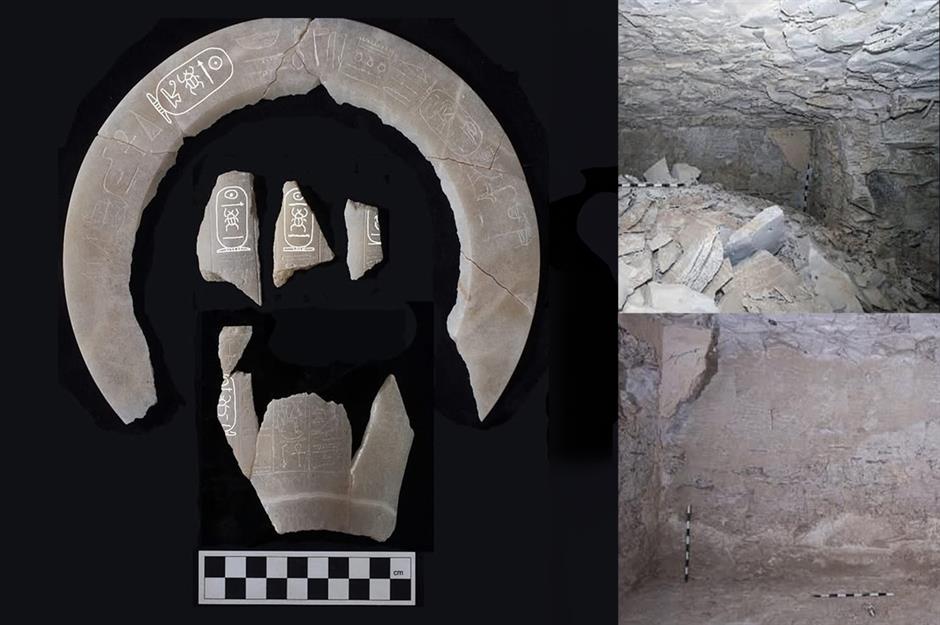
In what has been declared as the most significant discovery since Tutankhamun in 1922, a joint British/Egyptian team has discovered the tomb of Thutmose II, the ‘missing pharaoh’ who ruled 1493 to 1479 BC.
The rock-hewn tomb was found near the Valley of the Kings in February 2025. Although largely empty, the tomb hadn’t been looted. Rather, archaeologists believe that it was packed up and moved after the original site was flooded. Luckily a few objects, like this alabaster duck vessel, were broken during the move, providing vital clues to the tomb’s royal provenance.
Read on to discover the astonishing story of the Pyramids of Giza...
Comments
Be the first to comment
Do you want to comment on this article? You need to be signed in for this feature